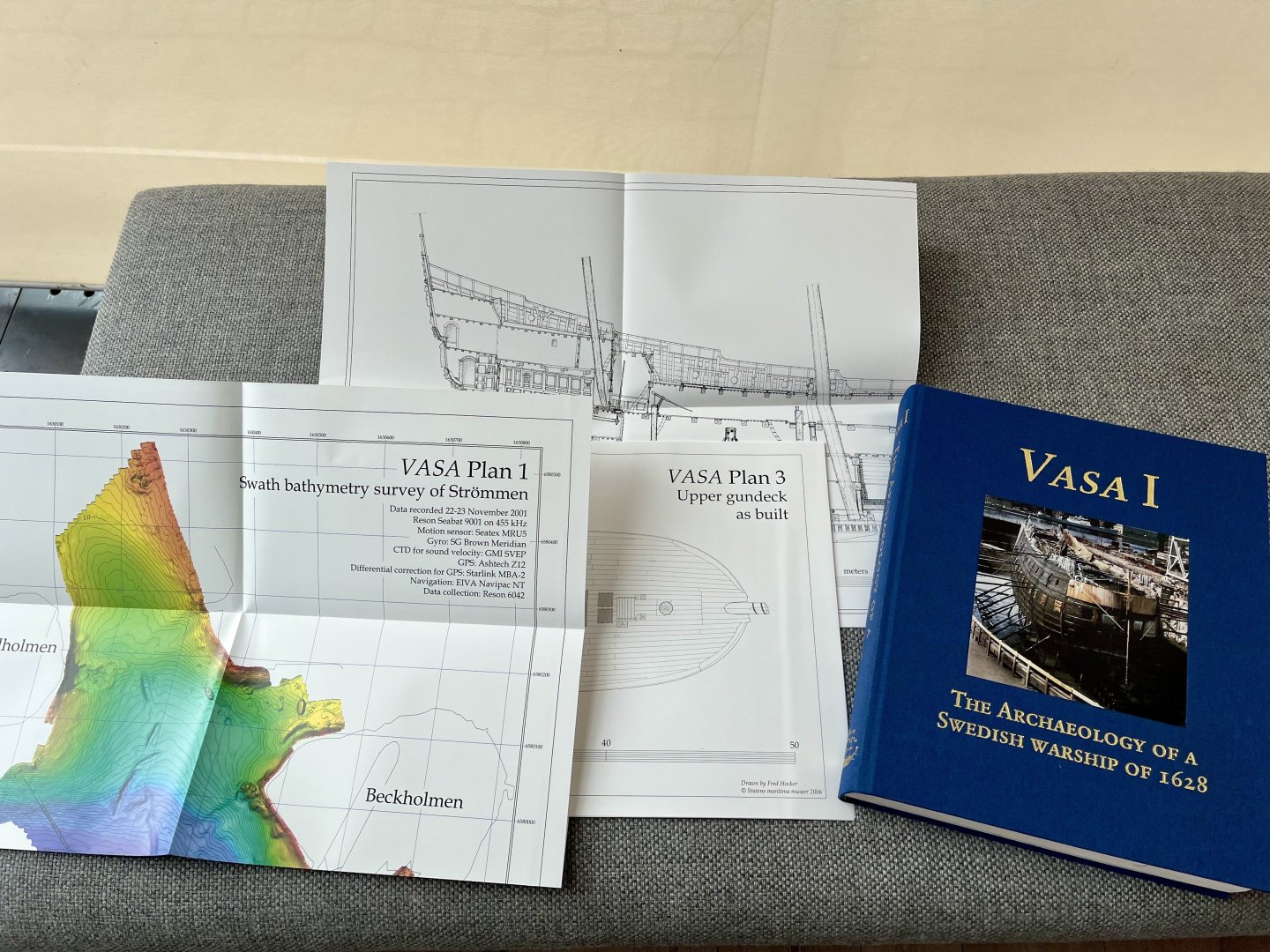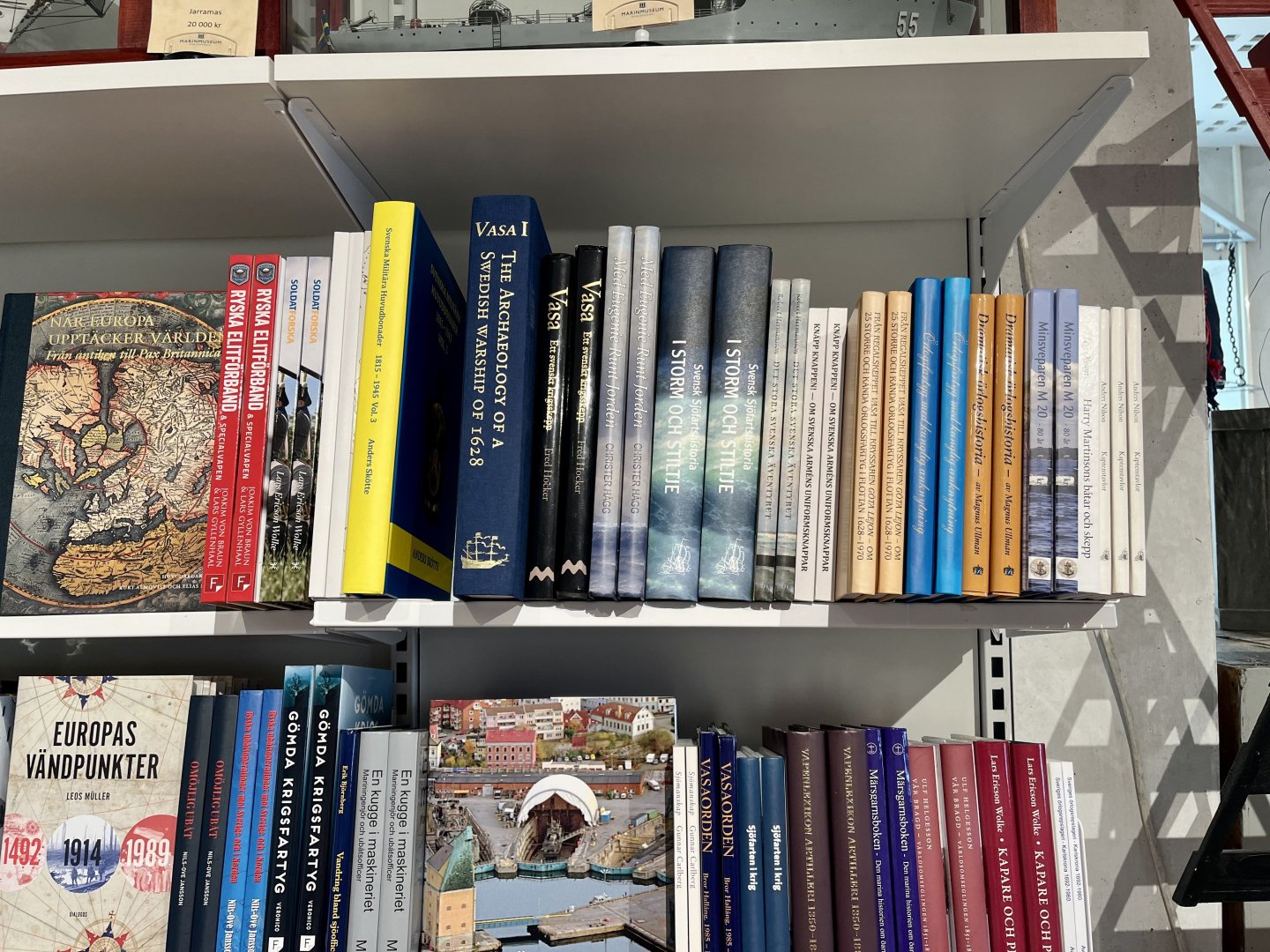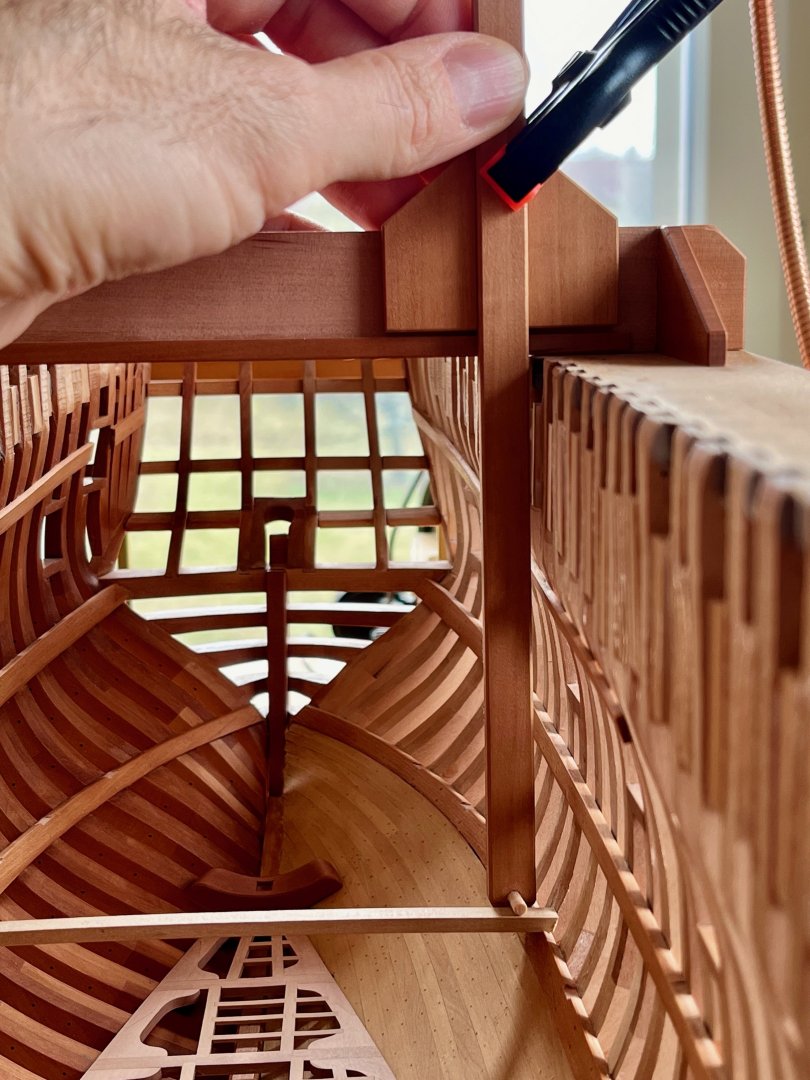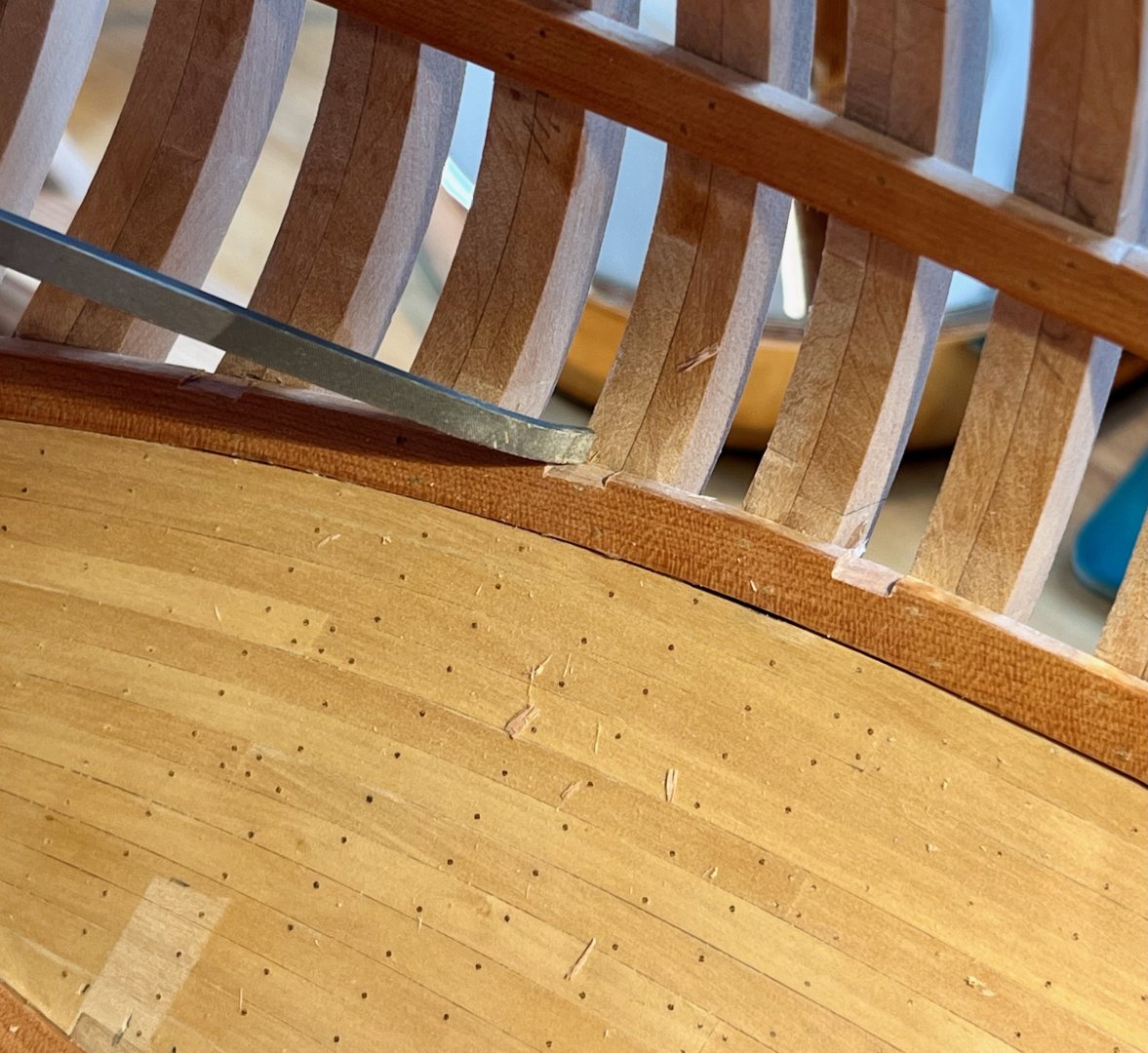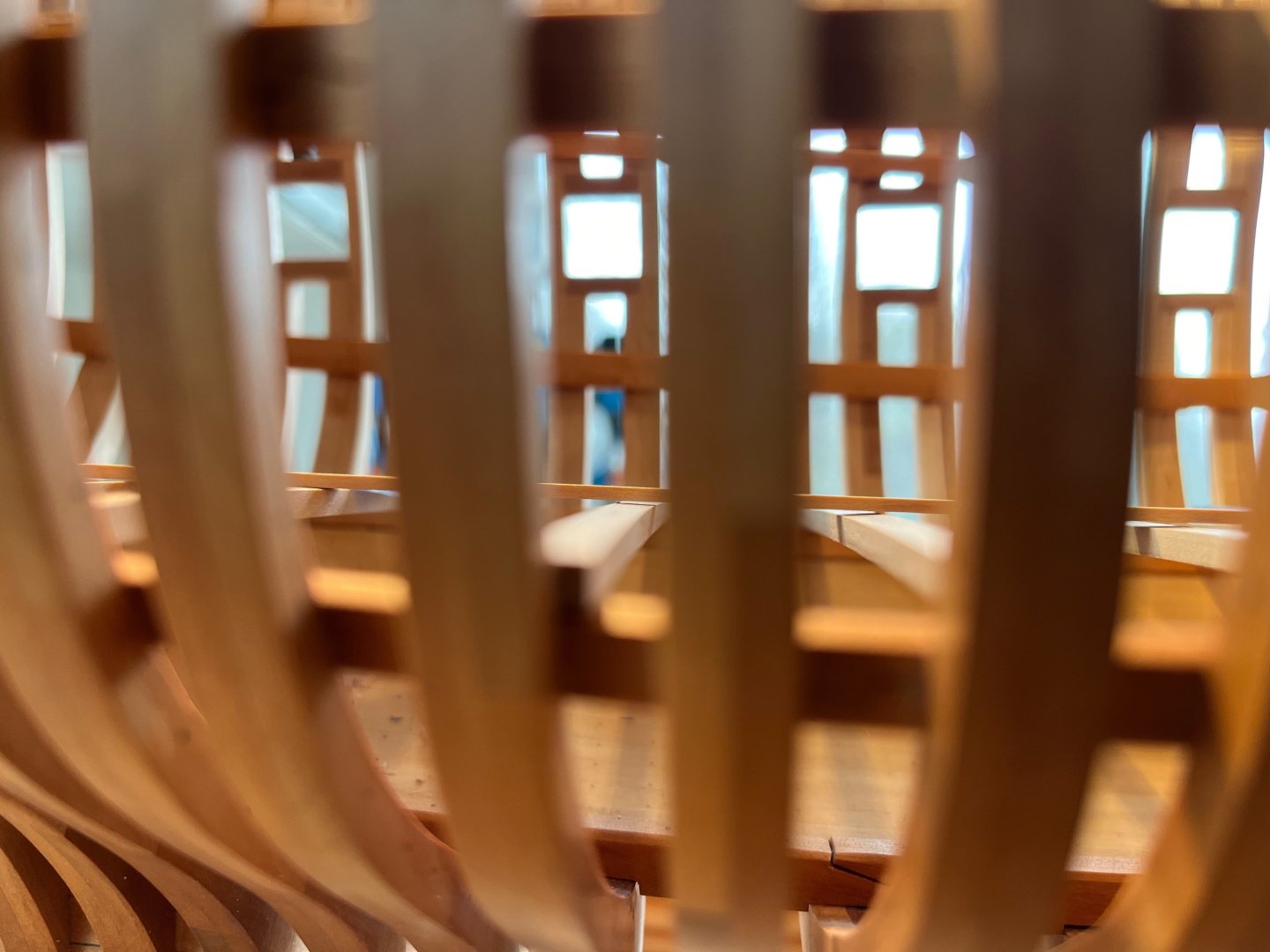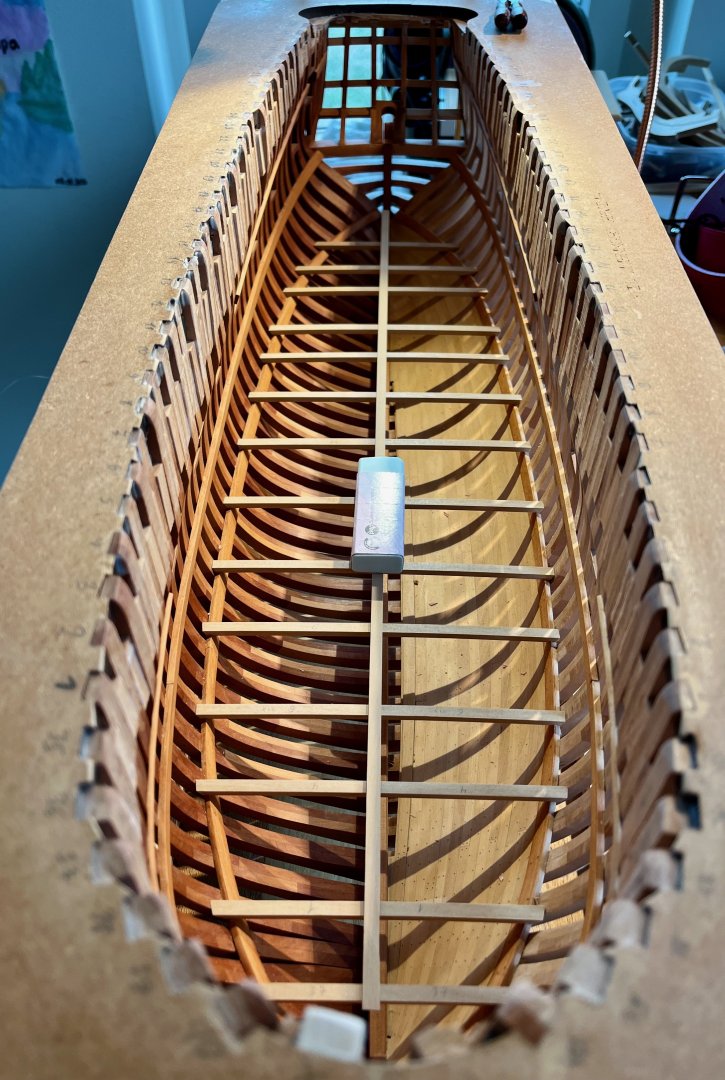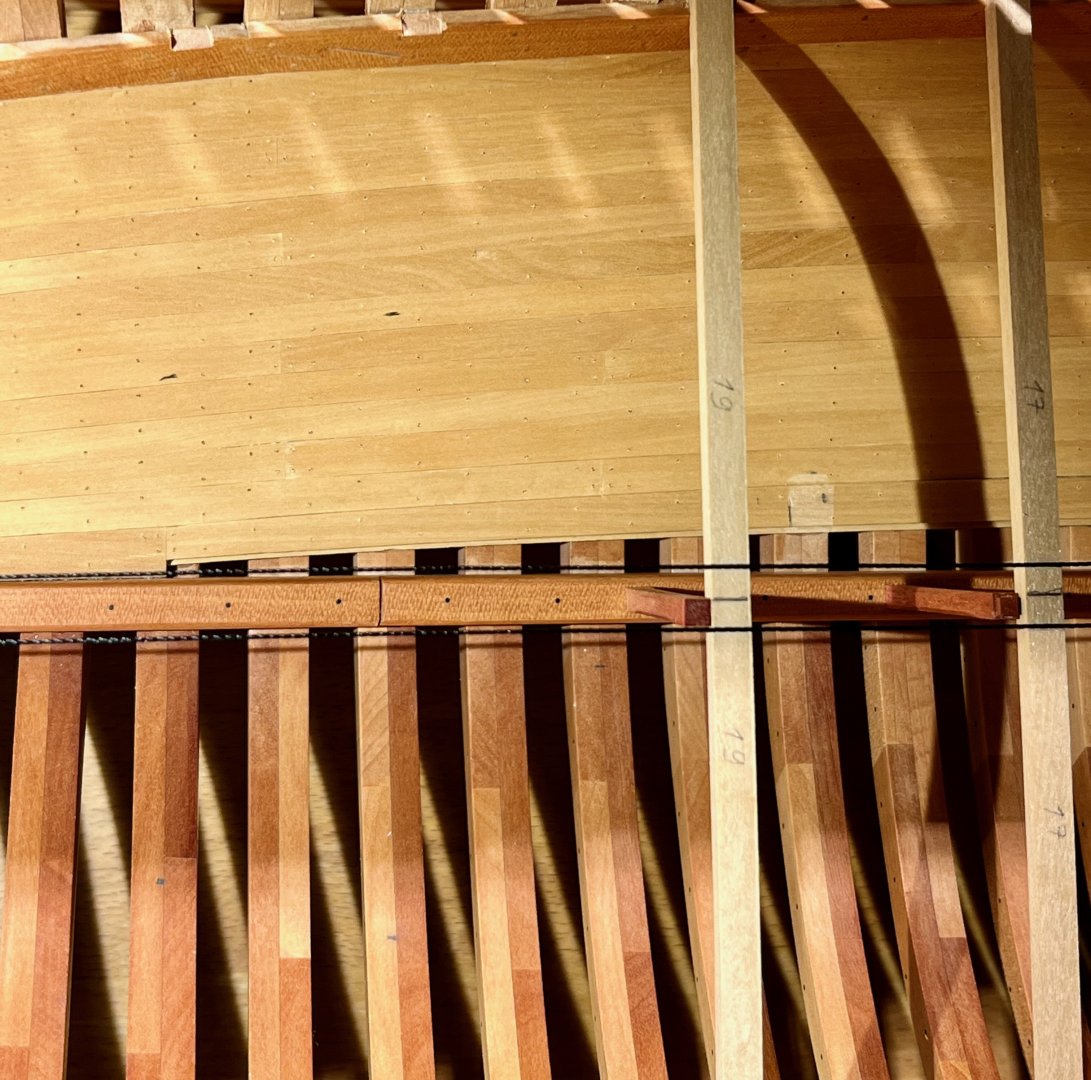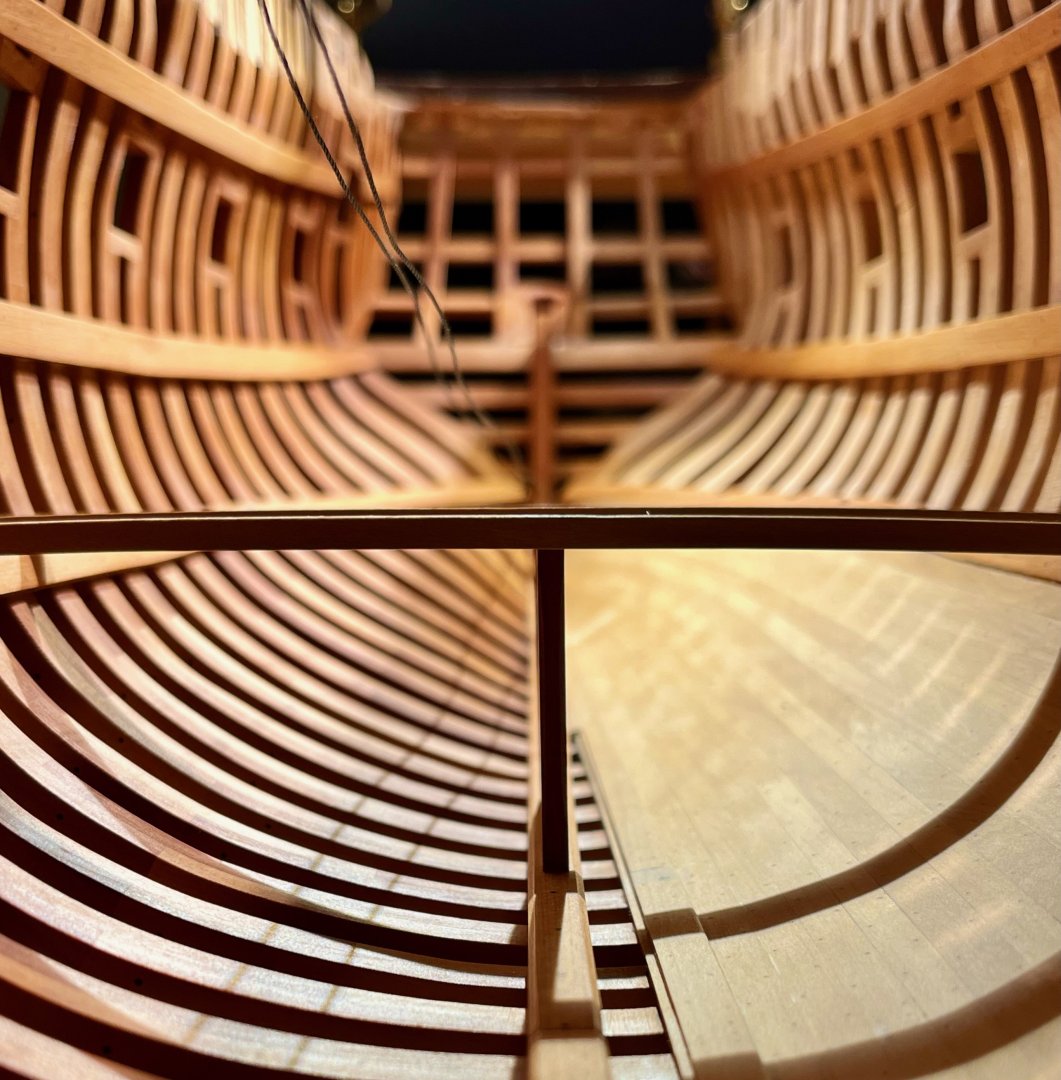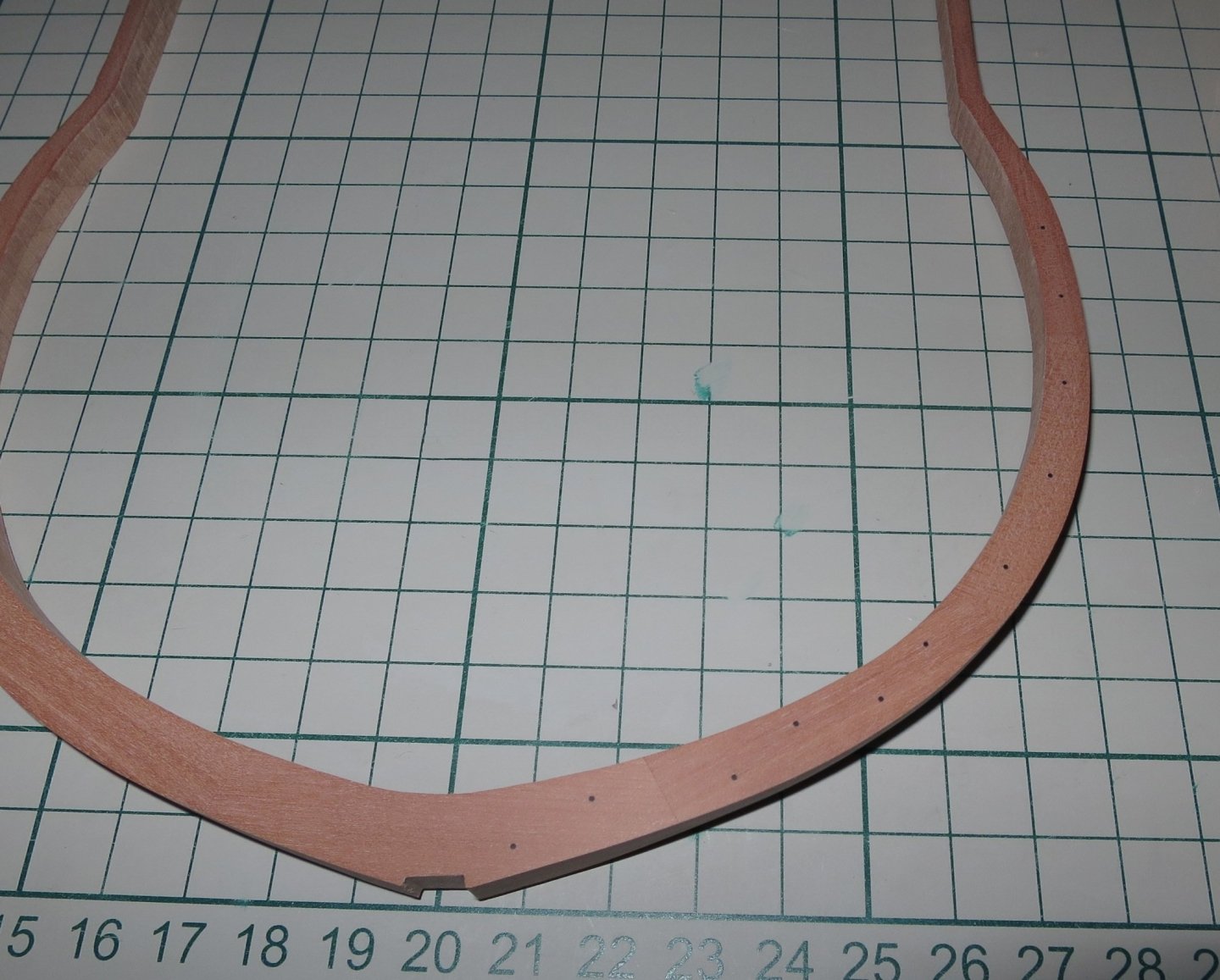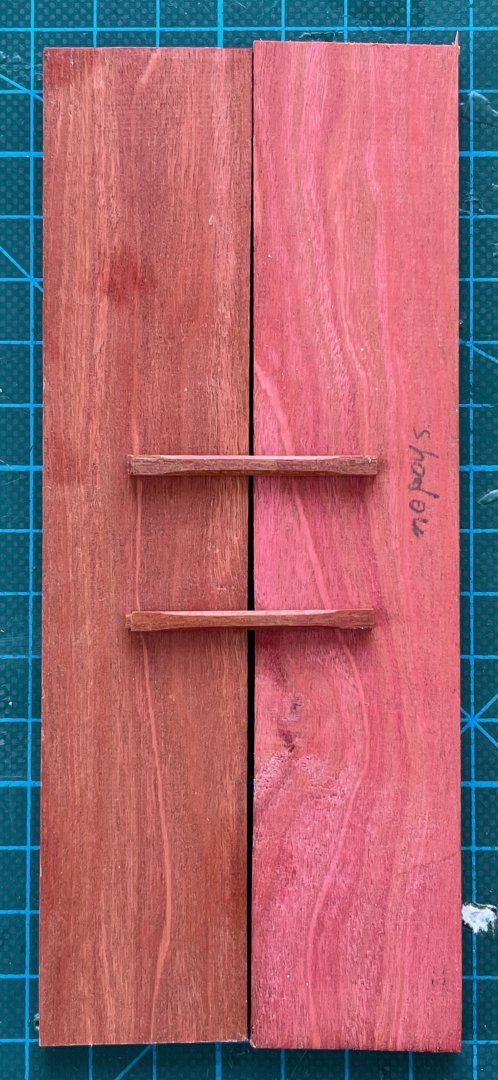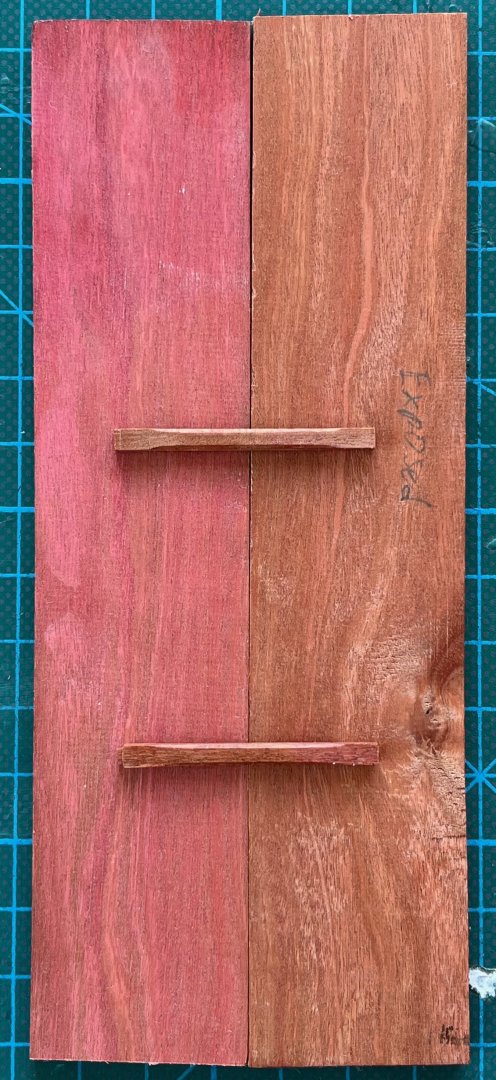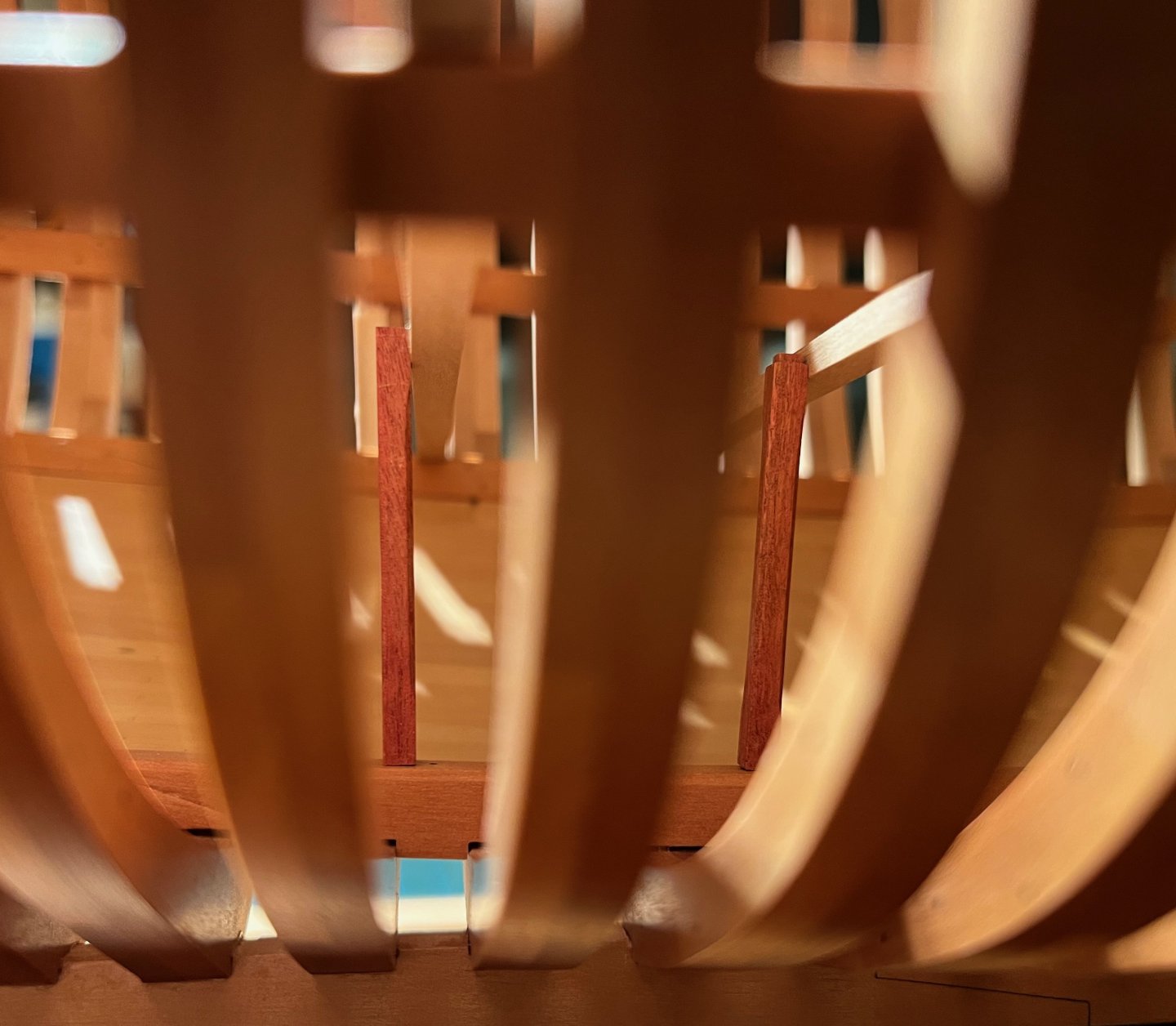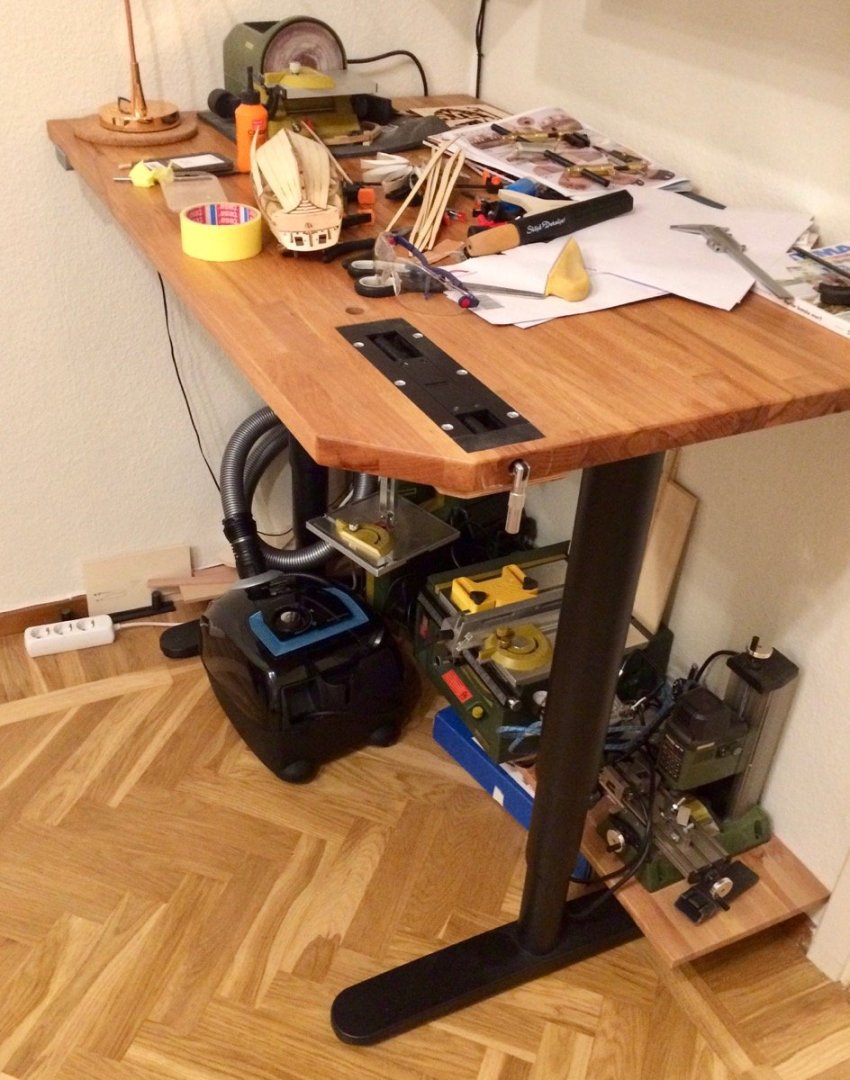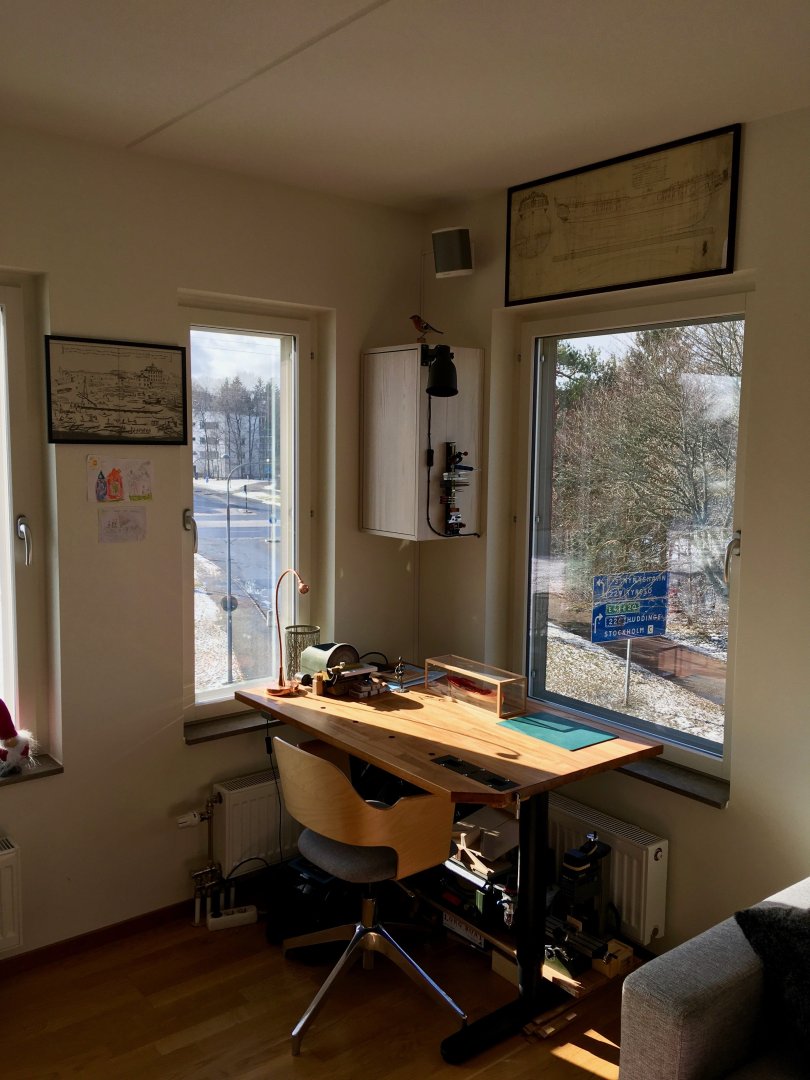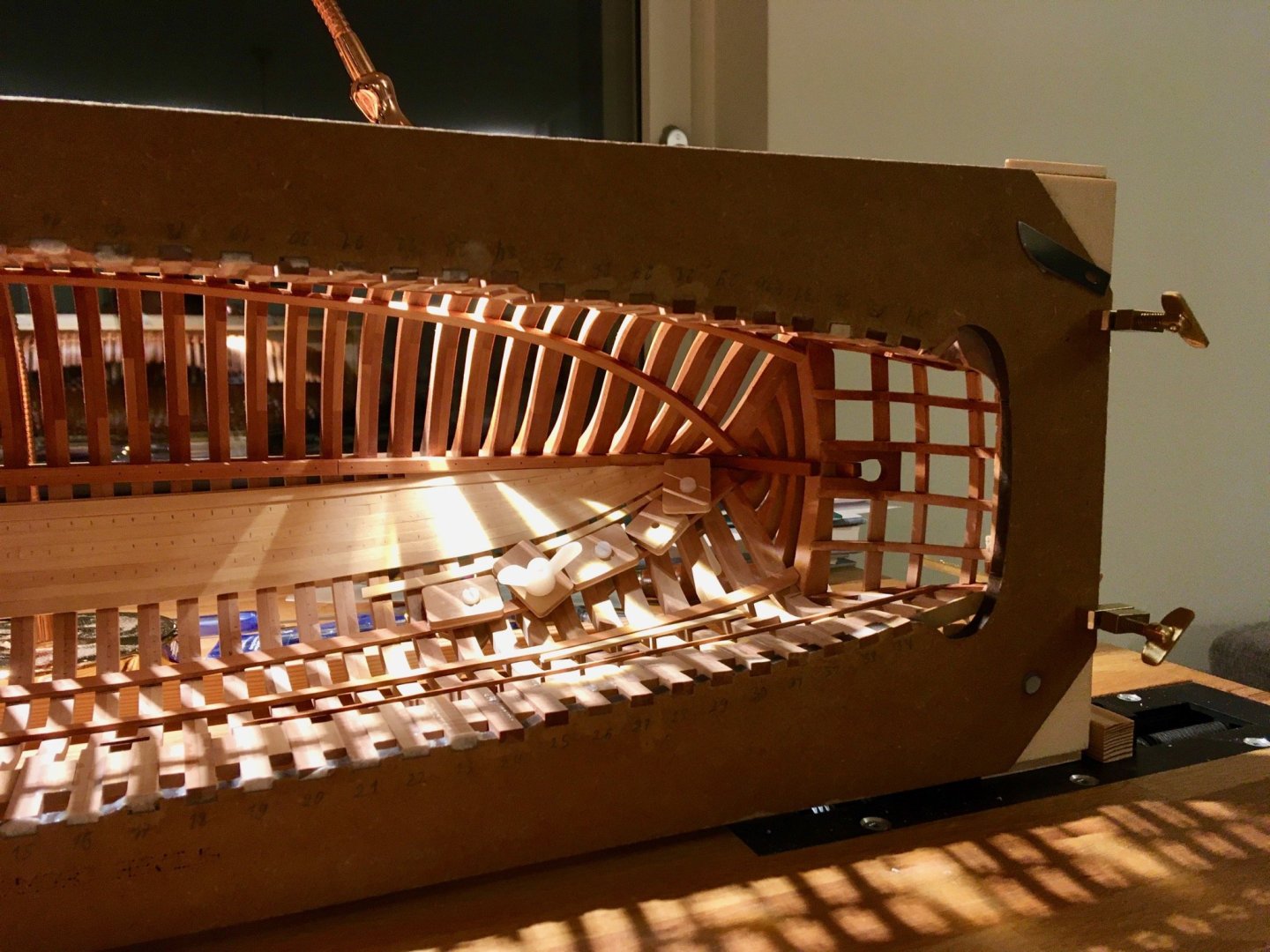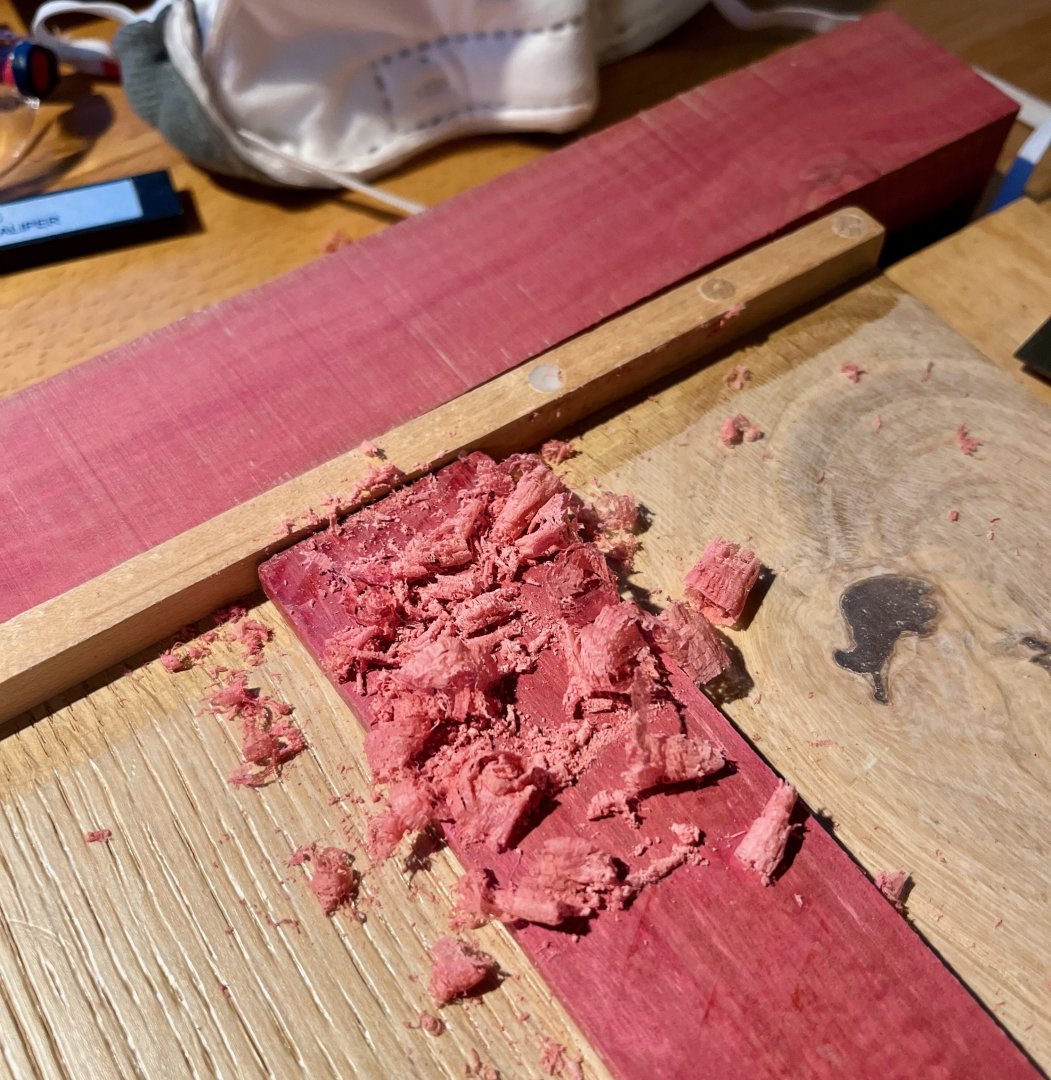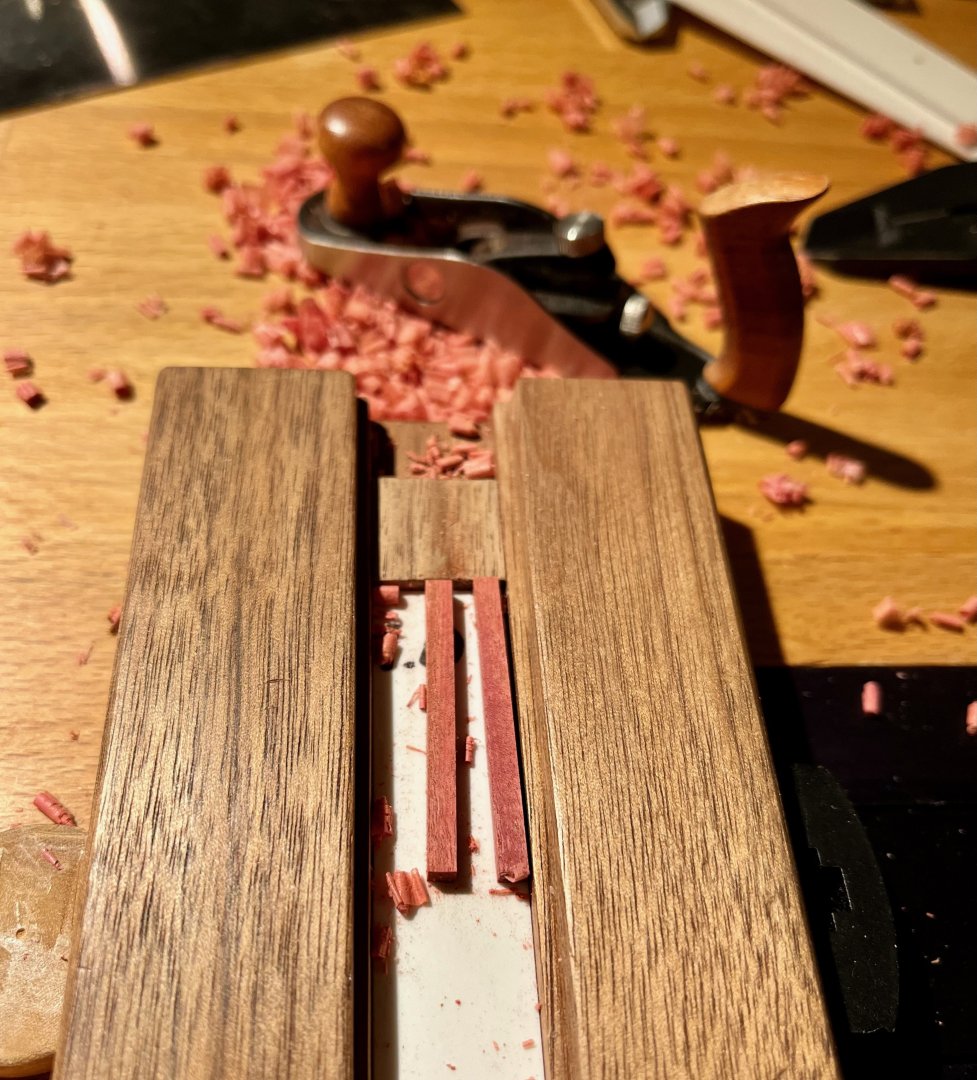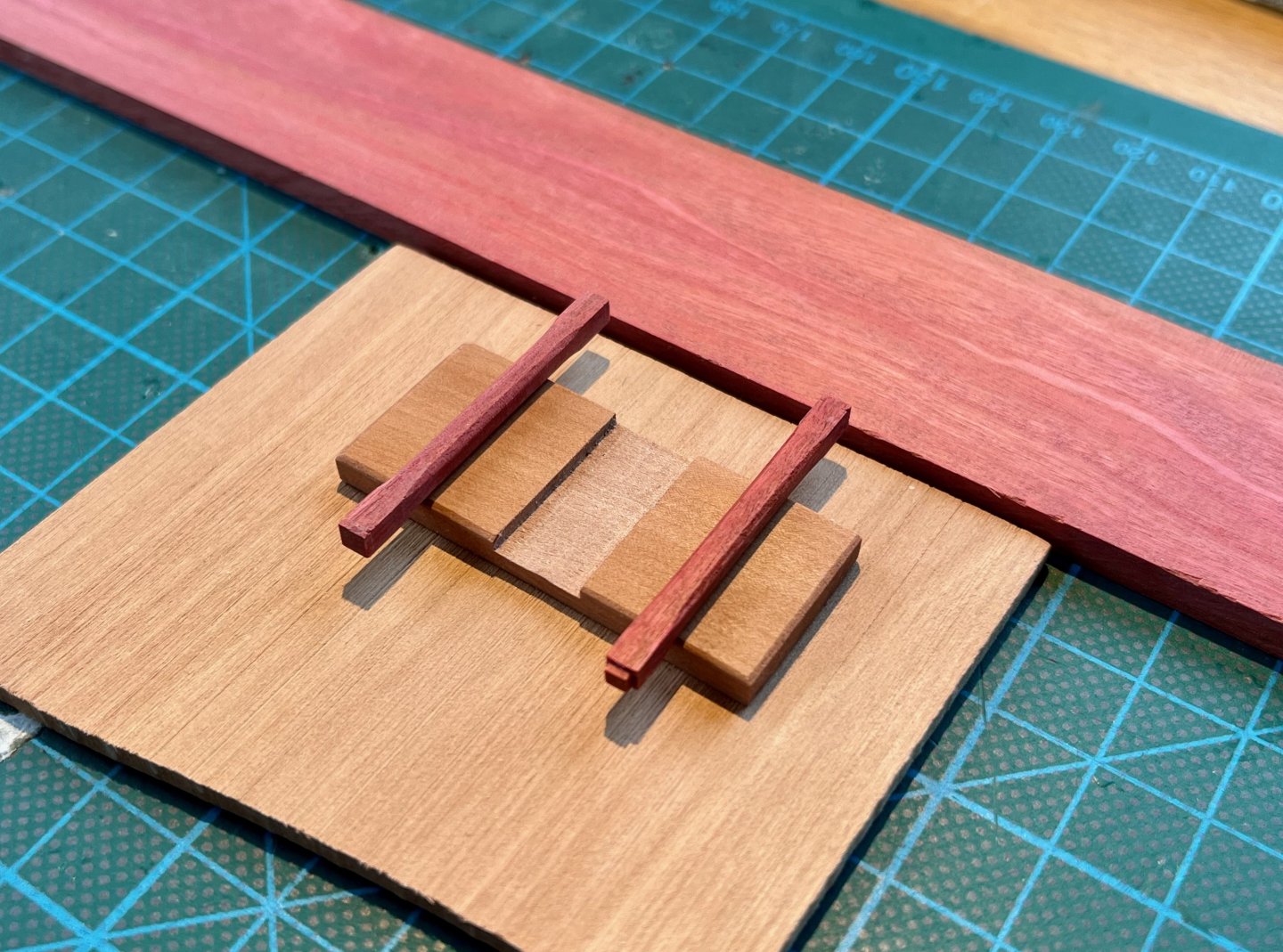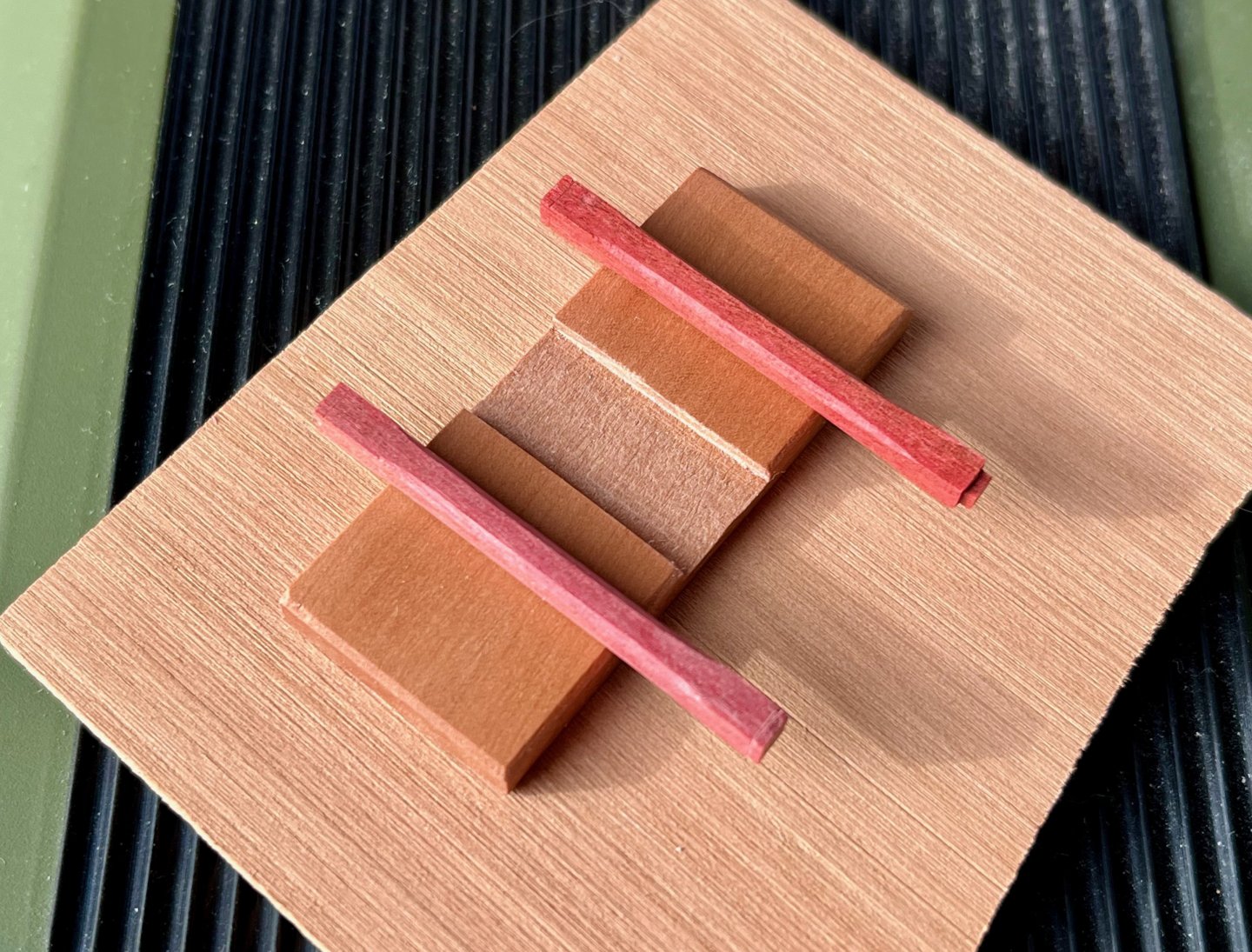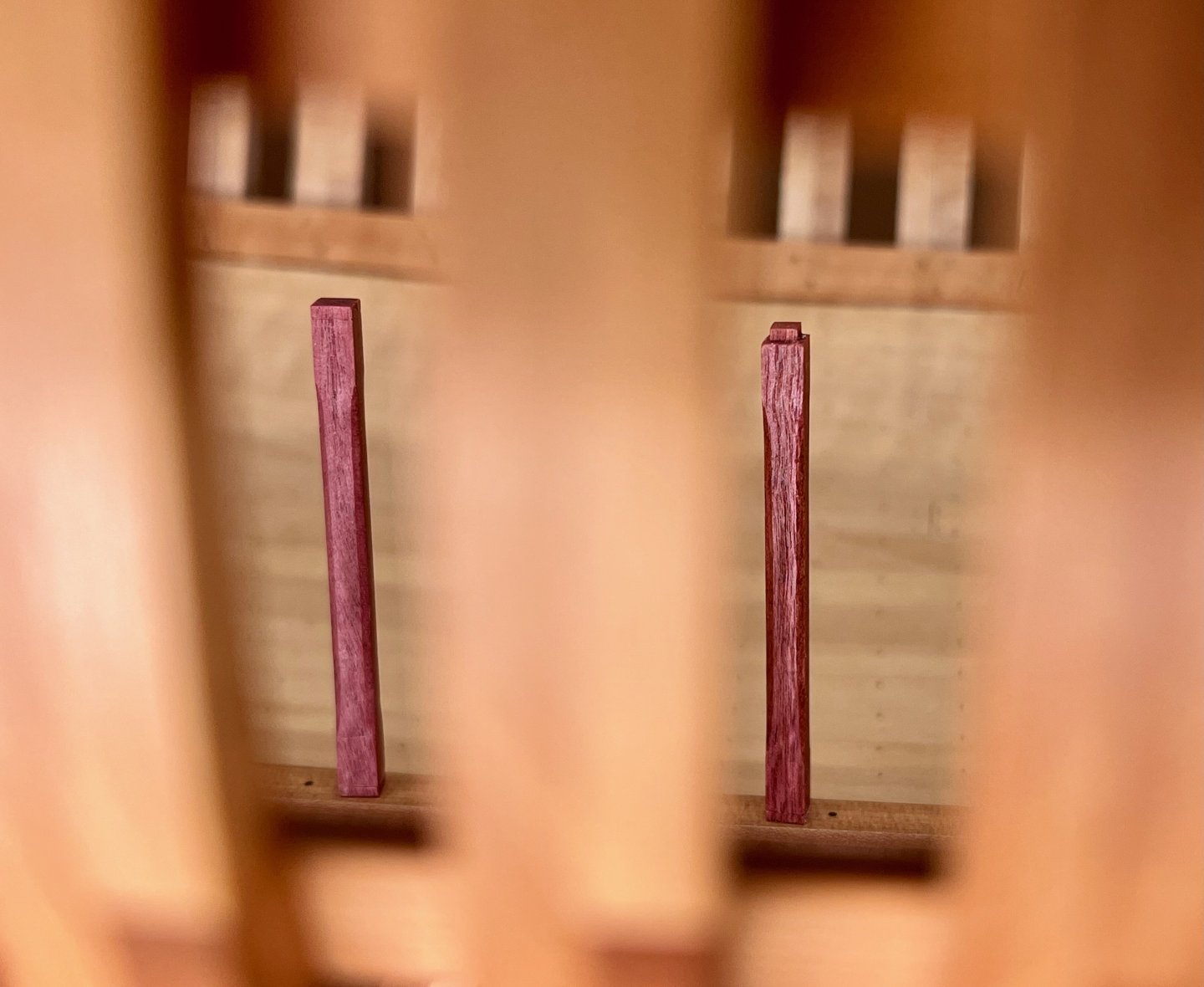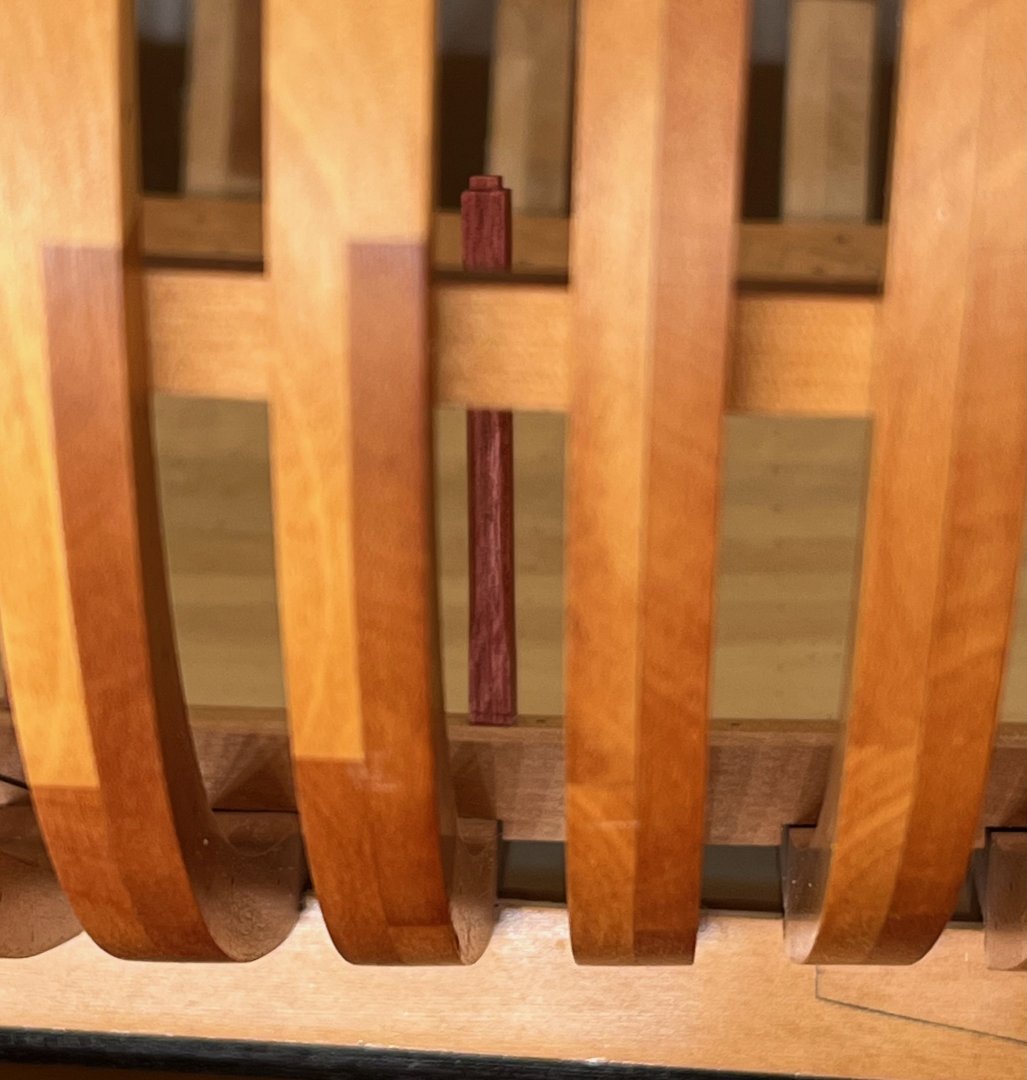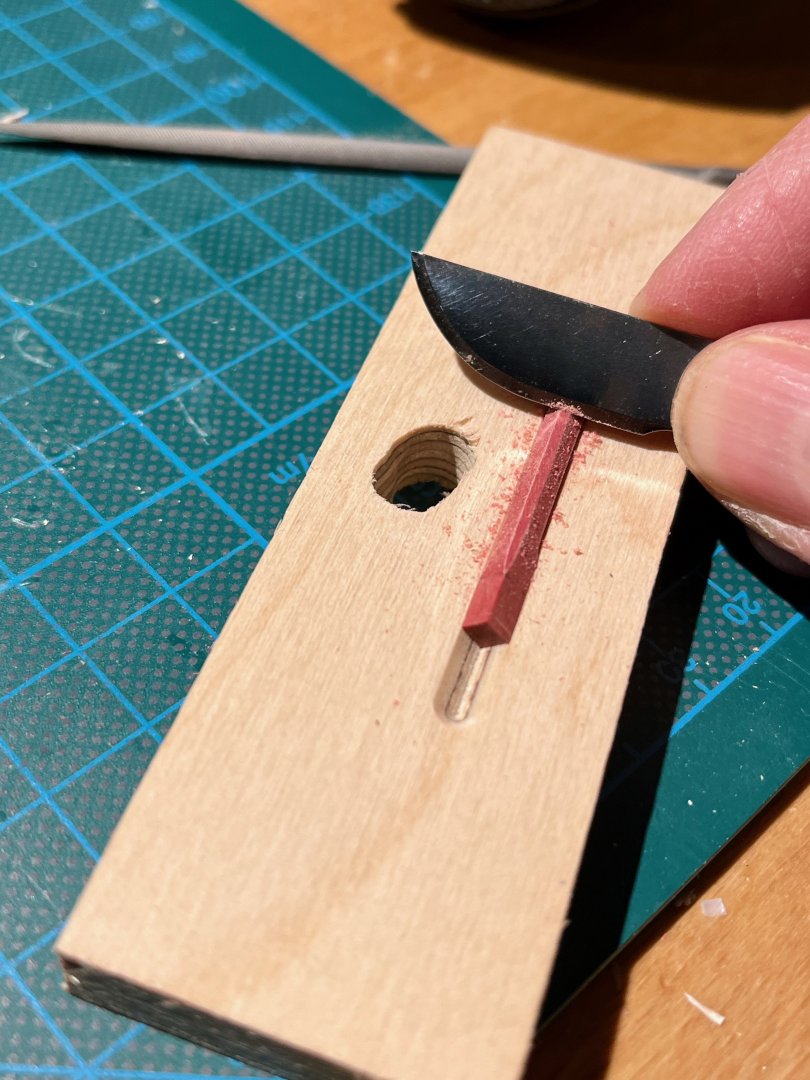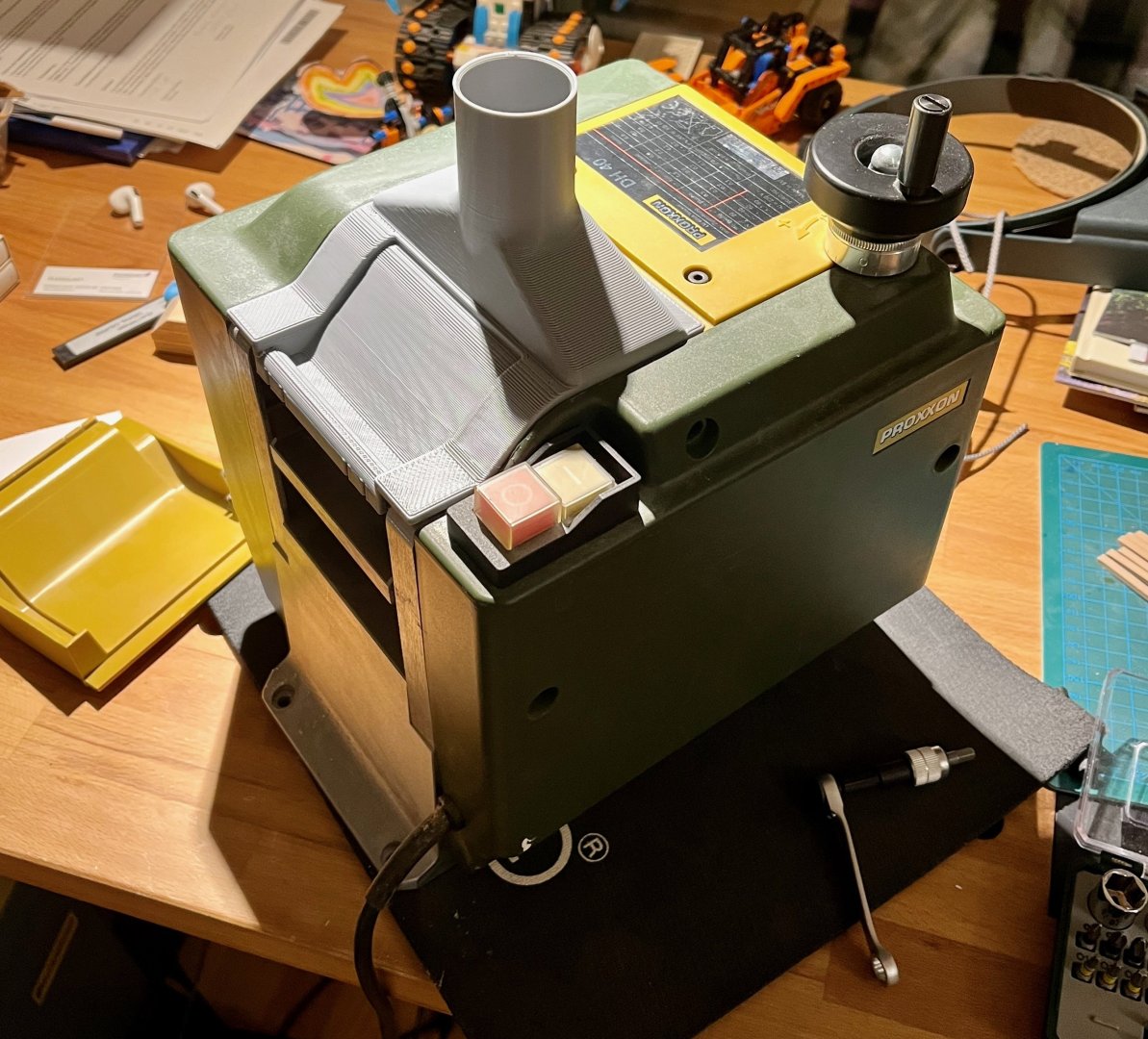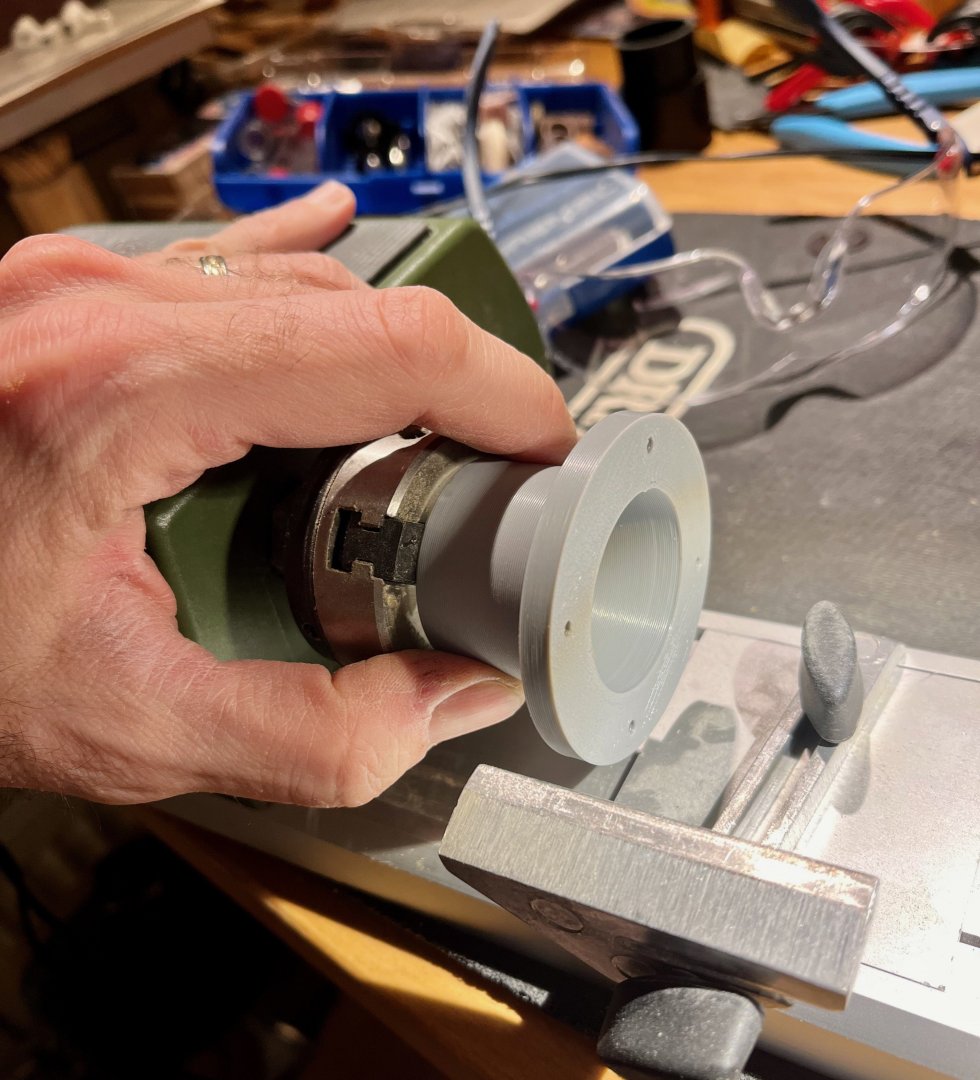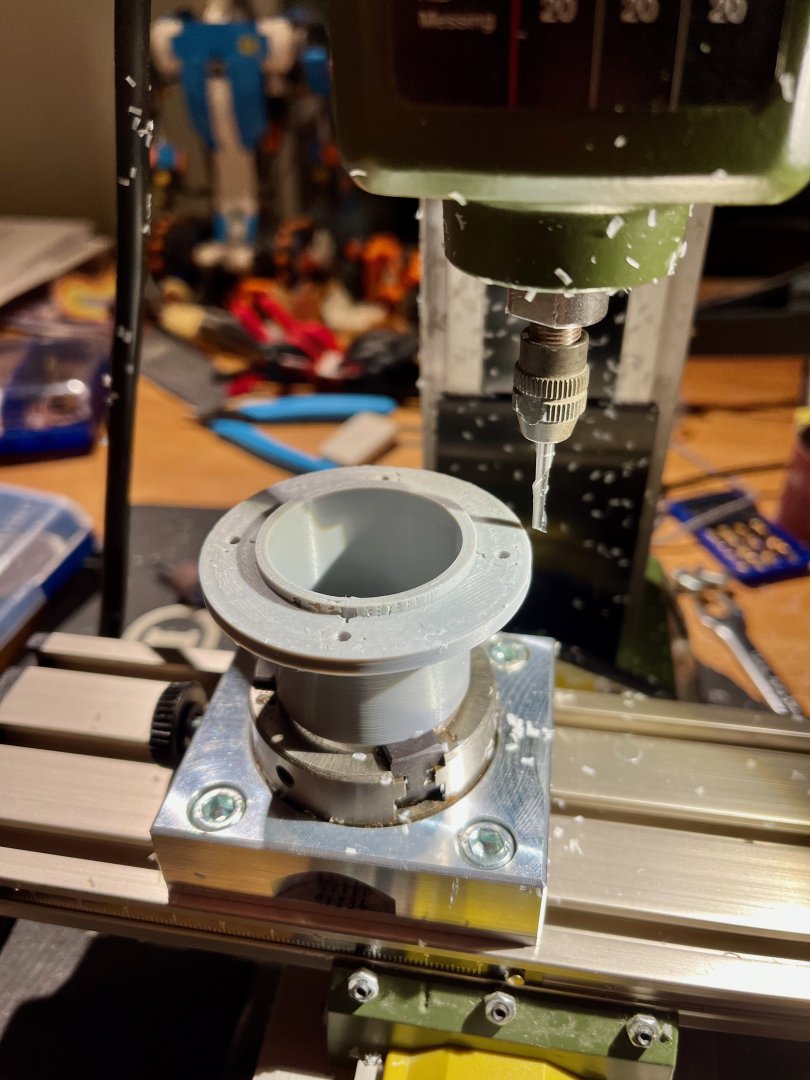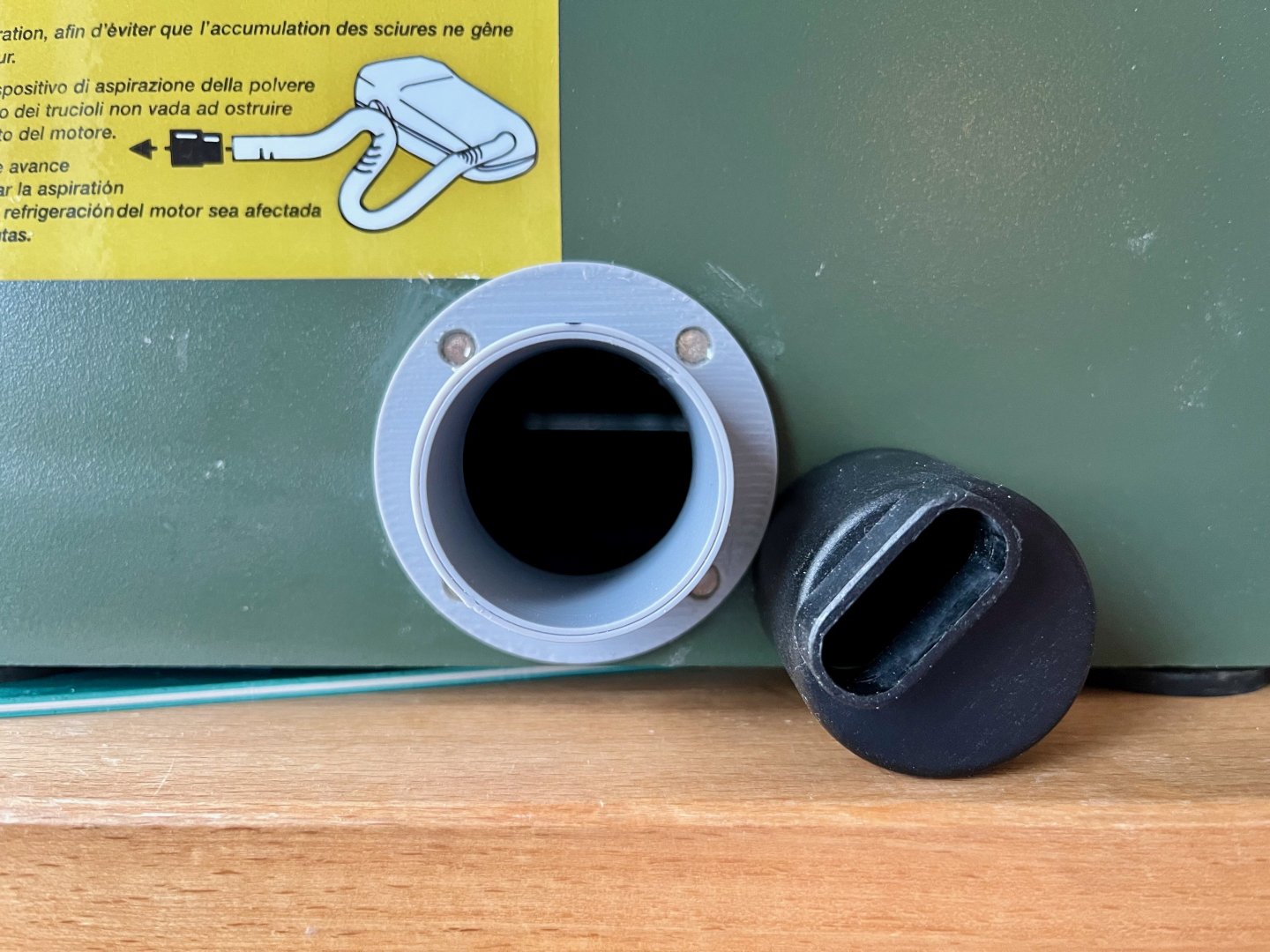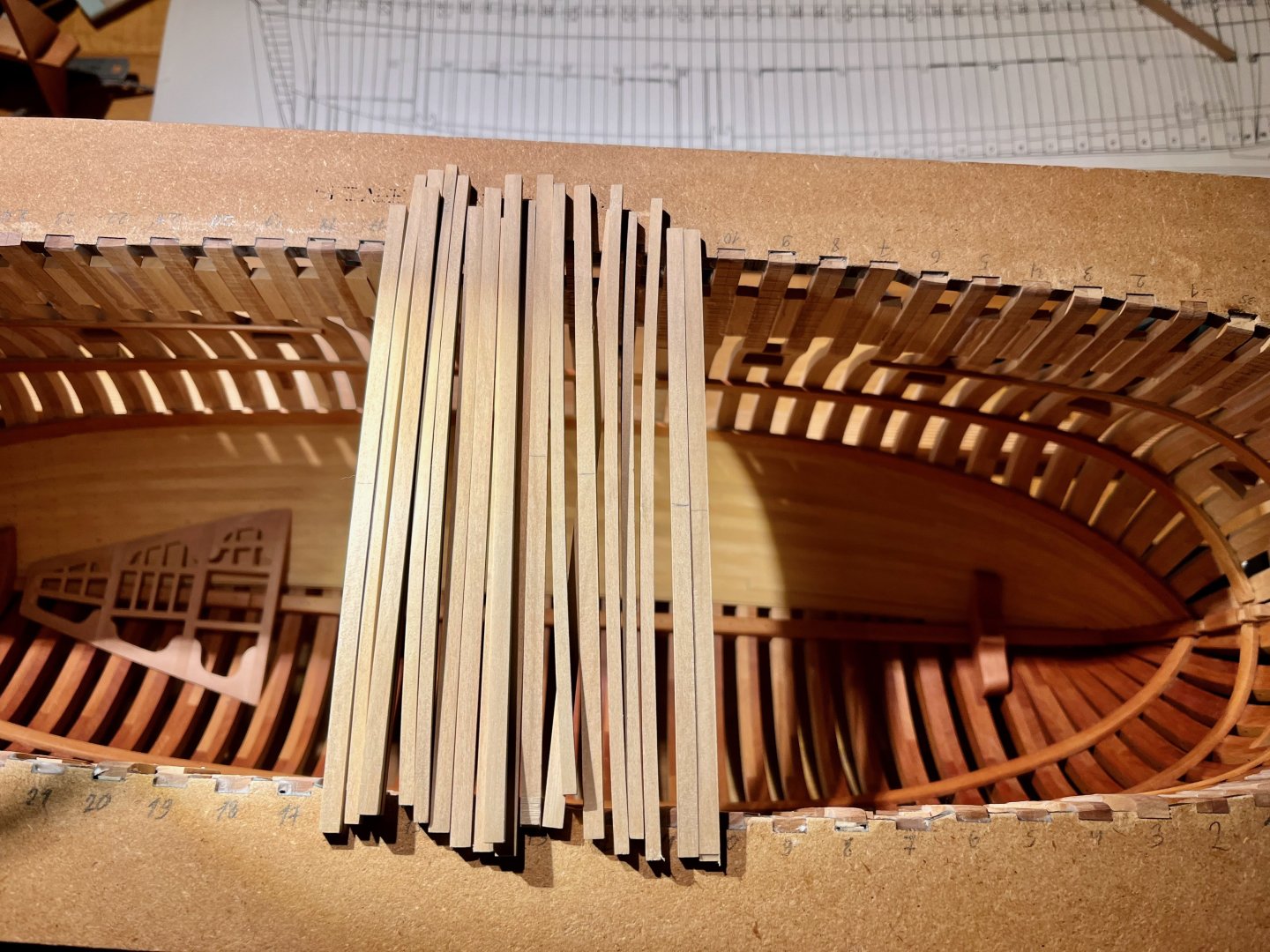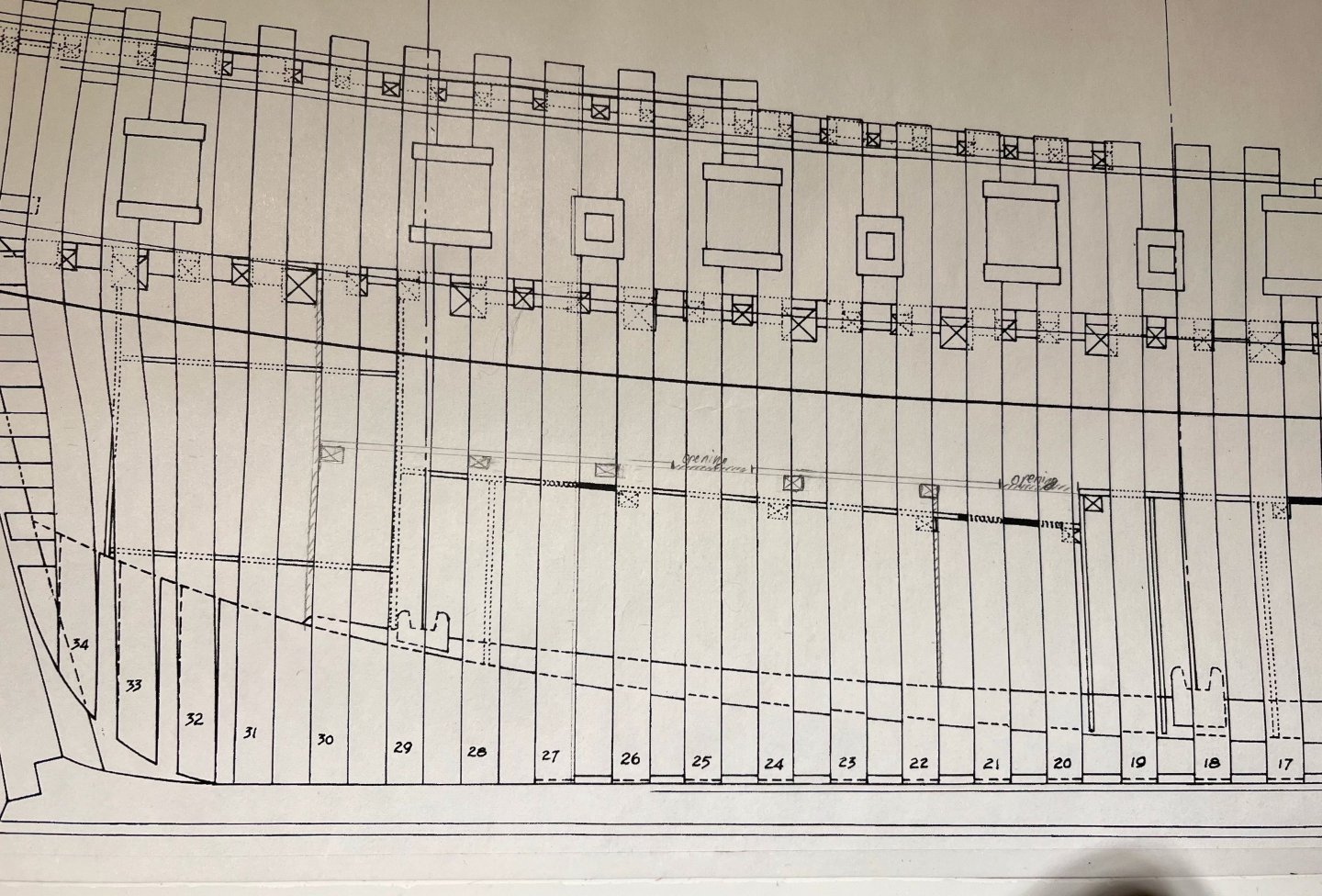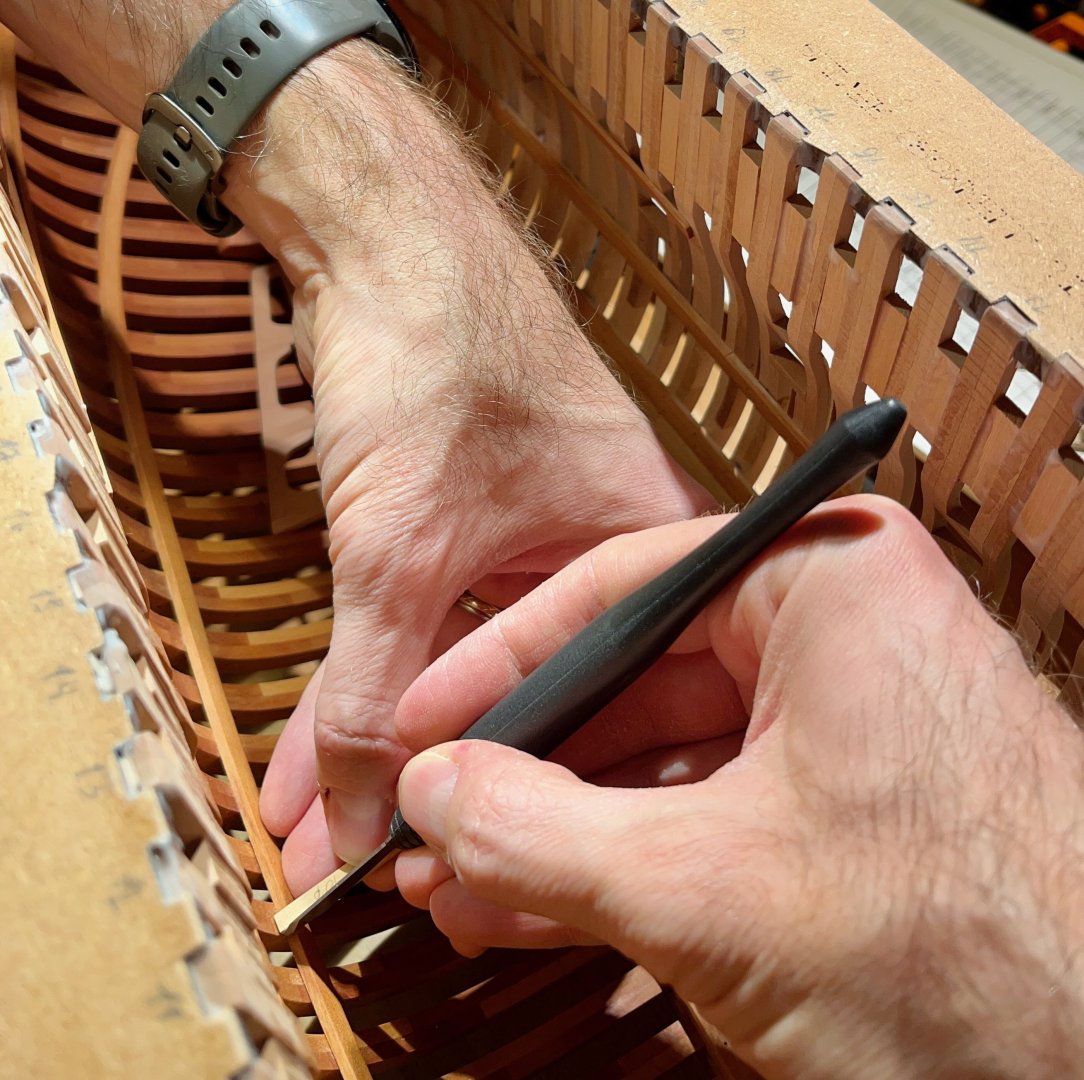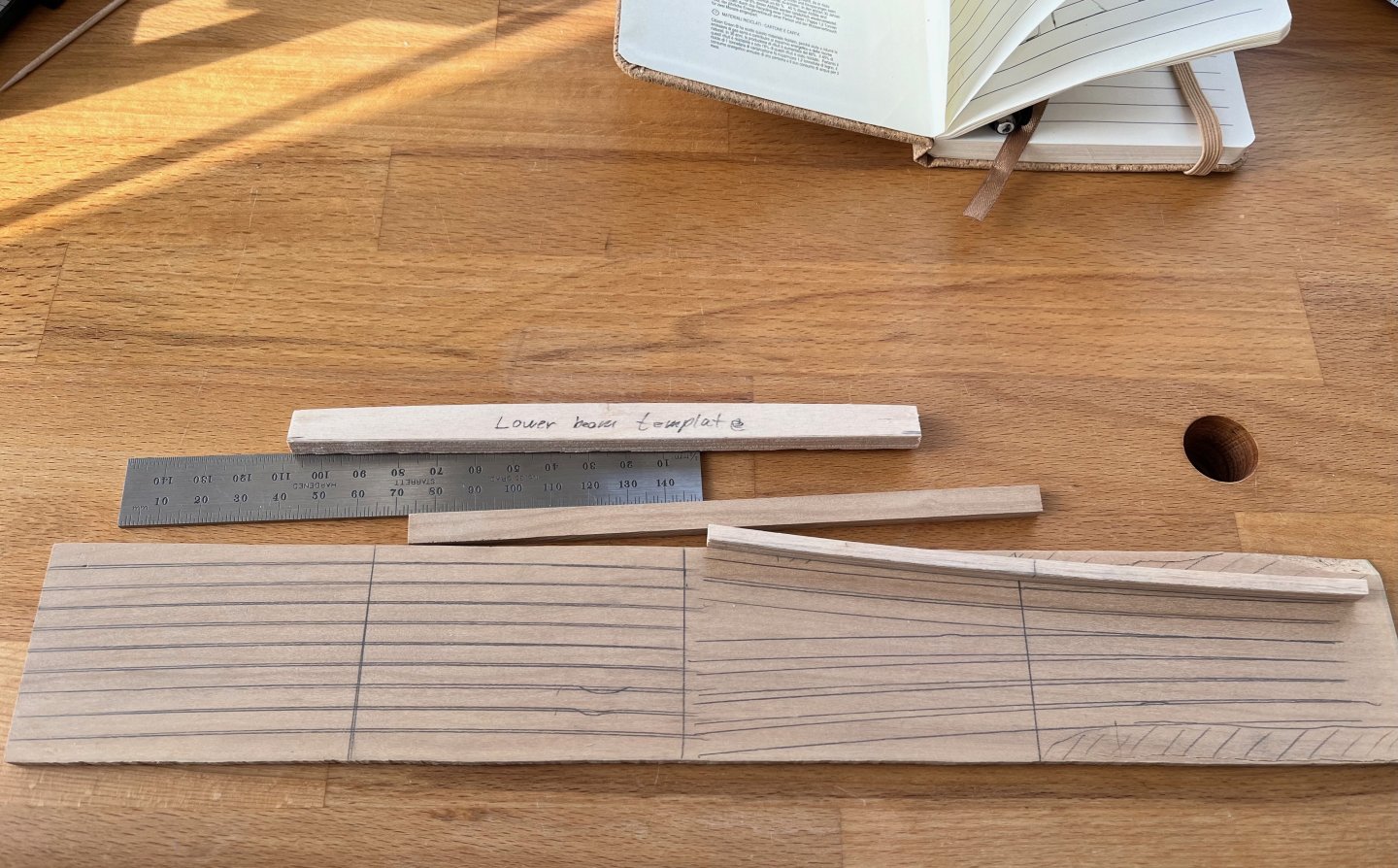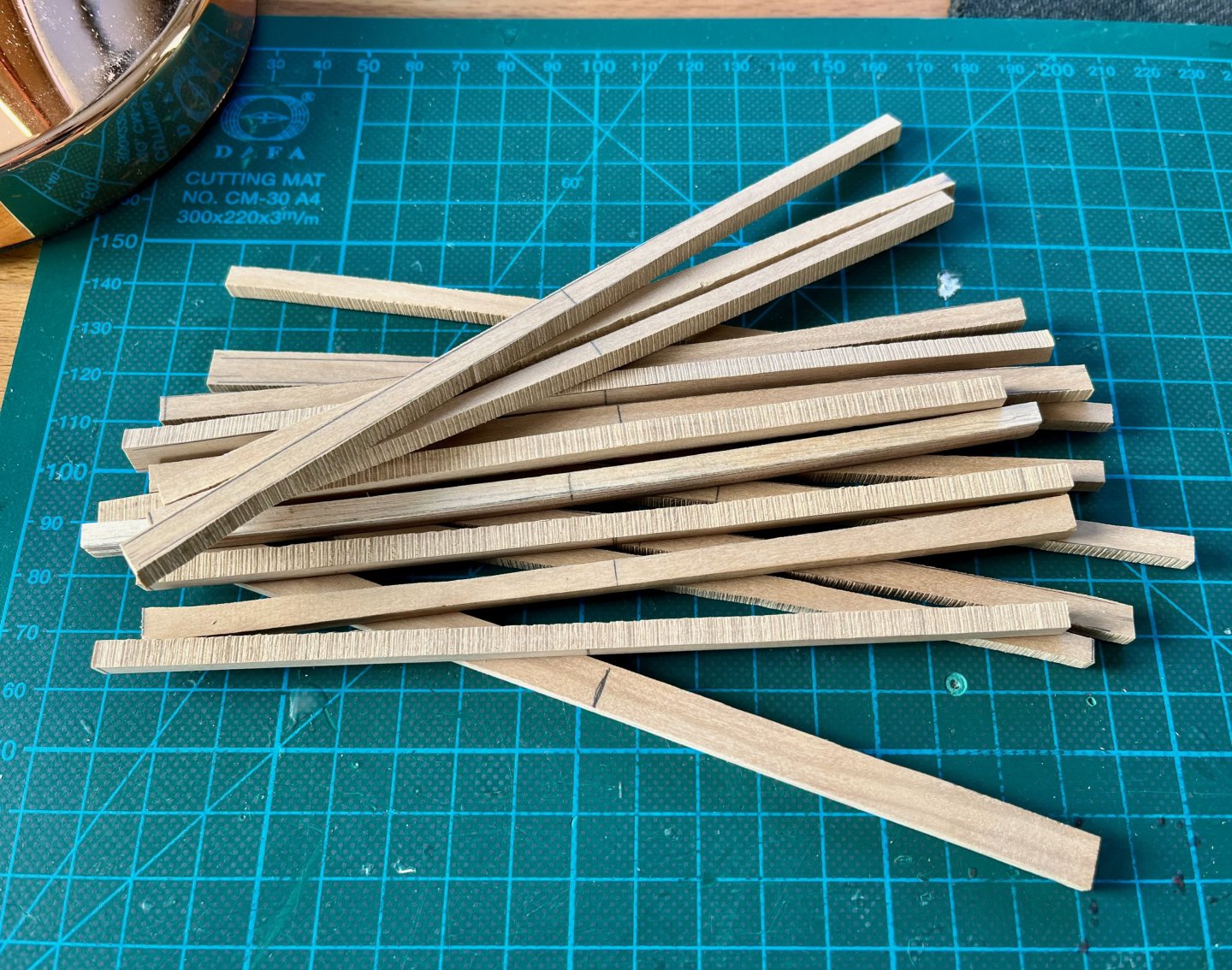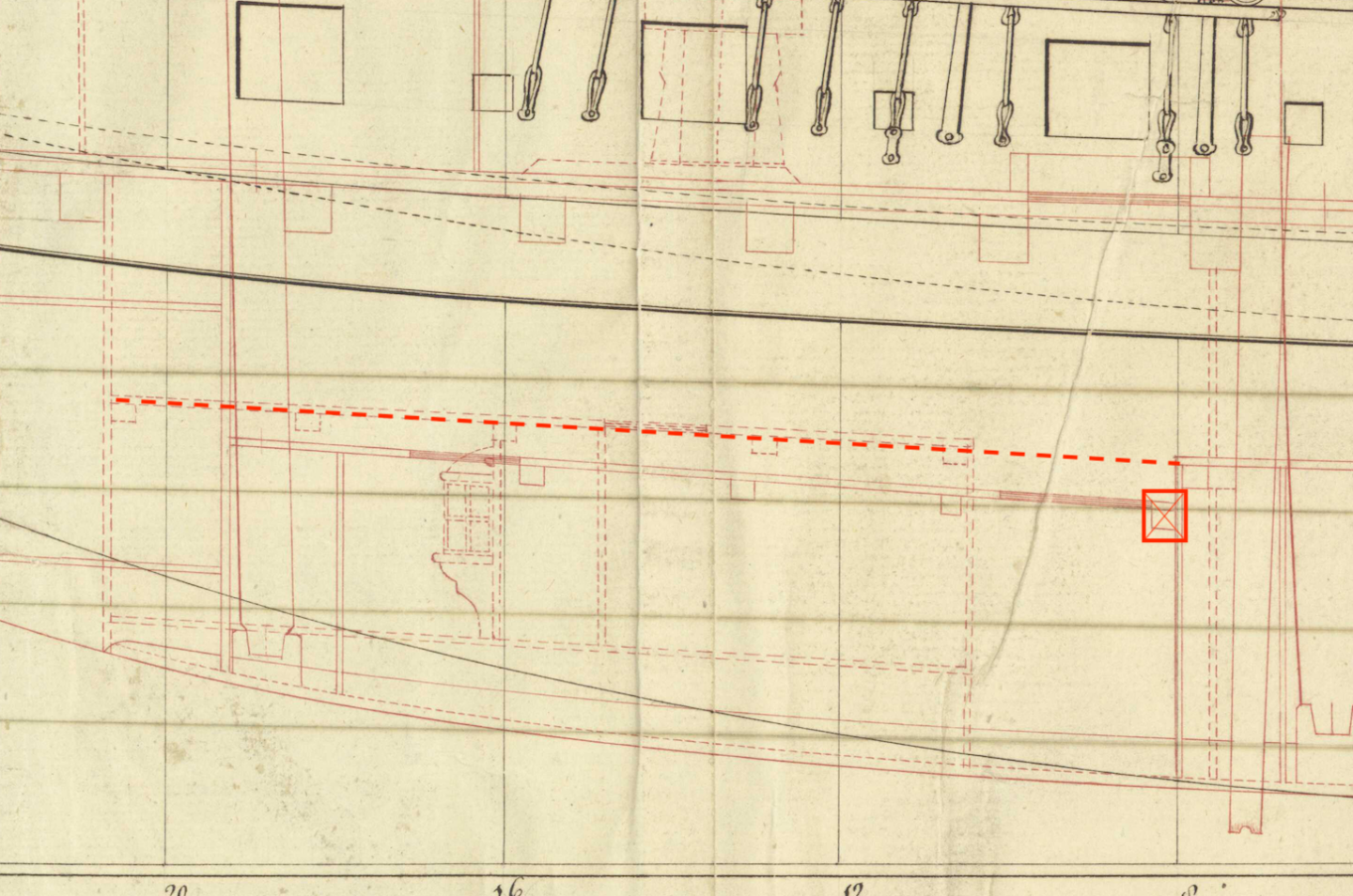-
Posts
1,543 -
Joined
-
Last visited
Content Type
Profiles
Forums
Gallery
Events
Everything posted by Mike Y
-
Unbelievable! I found Volume 1 in the wild, english version, not used, and it does not cost a fortune - but a list price of a mere $52! For comparison - the only second hand offer I found on Amazon is $1362 😳 It is on the shelf in the Marinmuseum (maritime museum) in Karlskrona. The treasure is there, among other books in the gift shop! I could not believe my eyes. On the official museum website it is listed as ”sold out”: https://www.smtm.se/om-myndigheten/forskning/publikationer/vasa-i And the shop personnel could not find the book in their computer, which made the transaction a bit complicated 😊 But you can try to contact the museum shop directly (their english is most likely very good) - you might persuade them to check the physical stock on the shelves, my picture might even help. There were at least two books there, I bought one, the other one remains, complete with plans and diagrams. If someone was hunting for it for years - do not miss the chance
-
ancre La Belle 1684 by Oliver1973 - 1/36
Mike Y replied to Oliver1973's topic in - Build logs for subjects built 1501 - 1750
Very neat trick! Sounds easier than soldering and bending it, and "wasting material" is a non-issue at this scale -
Modelling ”career” definitely splits on ”before and after getting your first lifting table” 😊
-
Next was the fitting the lower deck beams. Fairly straightforward and the alignment "jig" helped, though awkward to use (need to clamp its parts in a specific sequence, I dropped parts of the contraption into the hull many times, etc). Of course my deck clamps were not perfectly level to begin with, so some notches needed to be cut deeper than necessary to ensure a level deck. A curved Vallorbe file came in really handy to tune the depth of some notches! Once all beams were horizontal - the run of the deck was already quite fair, with only a minor adjustments to be done for a couple of beams. I was worried it would be a never ending process of alignment (fixing one dimension just to re-align the other), but it was not that bad. End result. Note the tiny gaps on the right side, I do not want beams to push into the frames on both ends to prevent any buckling or tilting due to the seasonal wood movement. The gap would be hidden by the inner planking on the right side, while allowing the hull to "breathe" a bit. My mind got carried away with plans for the deck structure, all the carlings and ledges, thinking how I would approach the construction. Marking up in situ? Making some paper template? Add temporary spacers to lift the deck in one "piece"? Use some rubber bands to firmly fix beams in position without drilling pin holes? Oh, right, that comes much later, I only did them to install pillars... I then remarked the true centerline using a string and placed these two test pillars under a beam. To my horror the beams standing on the keelson looked clearly off-center! The centerline string was already removed by that point, so I pulled two strings for a quick illustration. After careful checks the reason was found - the keelson is not perfectly level and is glued slightly tilted, resulting in a skewed pillar if you just place it on top. No big deal, can be easily compensated for. Luckily there is no issue with an off-center keelson or an incorrect hull shape. Always a bit scared of finding some critical mistake done 10 years ago... 🫣
- 967 replies
-
- hahn
- oliver cromwell
-
(and 1 more)
Tagged with:
-
It's been 1.5 months of "aging" the Pink Ivory sample - the plank was laying on one specific side in a sunlight on my table, but not in an extreme way, sun hits it at an angle. As expected, it got darker, almost like a fresh vs aged red brick Coincidentally I bought that piece of Ivory because of the build log where brick oven was made out of pink ivory "bricks": https://modelshipworld.com/topic/11140-washington-galley-by-yamsterman-148-scale-pof/?do=findComment&comment=436782 To simplify the comparison I split it in half, the difference is clear (on the second photo both halves are flipped). No sanding to avoid damaging the "patina" layer, so sorry for some stains or fingerprints. Text says "shadow" and "exposed", but you can easily guess which one is which Both pillars were also in a direct sunlight, and looks like the one with Osmo finish aged tiny little bit less. Even when aged they look quite fine, and I think I'll go with it instead of a pear / box / ebony that are the usual candidates The texture is interesting - it has some grain, but not extreme like a walnut. It looks rougher when surrounded by the pear/box hull, but not too extreme or out of scale, even on close-up photos: (I know that this is not how pillars are attached to the beams, these are just test pieces freestanding on the keelson)
- 967 replies
-
- hahn
- oliver cromwell
-
(and 1 more)
Tagged with:
-
Looking for ideas for work area
Mike Y replied to Desertanimal's topic in Modeling tools and Workshop Equipment
As always strongly recommend to buy an electrical lifting table, they are quite affordable nowadays with many companies on the market (including IKEA that sells frames separately). Replace a flimsy office tabletop with a sturdy solid wooden one - and you will end up with a fantastic build table that allows you to find a perfect height for any operation. I added an inset vise and peg holes into mine, the possibilities are endless. It is a relatively new "accessory" that is often overlooked, well worth the cost. I would avoid hammering mortise joint with a chisel on such a table, so it is not a full replacement for a workbench if you do a normal woodworking. But more than sturdy for all the modelling needs. Some examples of my setup (IKEA table frame, solid top cut to size of the working area, Veritas inset vise), very easy to customize it for your space. -
Thanks Druxey and Alan! Sometimes a little nudge is all we need Toni, it feels similar to pear or box when it comes to hardness, definitely not soft. Holds an edge pretty well, but despite a clean geometrical shape the edge blurs visually due to the grain of the wood. But definitely an interesting wood to have in your palette. Will report in a couple of months on the way it ages!
- 967 replies
-
- hahn
- oliver cromwell
-
(and 1 more)
Tagged with:
-
Experimenting with different woods for the Pillars in the Hold. Thought it might be a good opportunity to use Pink Ivory that I had in the stash for some reason. It is a very beautiful wood with pink shavings, indeed! A simple jig really helps to hold these tiny pieces when shaping. Scraping is a great way to get a smooth surface with a clean edge! Completed test pieces. The one with a tenon was finished with Osmo Polyx and the one on the left (with no tenon) has no finish. For colour comparison I made a photo on top of some pear parts (one finished and one - a rough sheet cutoff) Pink Ivory has a clearly pronounced grain resembling walnut, clearly out of scale. Though pillars in the hold definitely have a rough life I might still go with it, it might add an interesting accent deep in inside the hull when viewed from the side: As most of such woods it would likely loose its beautiful colour when exposed to UV, and would likely become brown-ish. I left these test pieces exposed on the table and will check them in a couple of months. Does anyone have any experience with this wood? What do think on the colour? I don't want my model to look like a clown car, but a bit of variety might not hurt
- 967 replies
-
- hahn
- oliver cromwell
-
(and 1 more)
Tagged with:
-
Tools update time! A friend printed some vacuum adapters for me The one for the planer works like a charm! Using the model from Oliver (see https://modelshipworld.com/topic/36705-suction-adapter-for-the-proxxon-dh40-for-download) Table saw received an update as well, the factory design is squeezing all the air through a narrow opening, generating a whistling noise louder than the actual saw. Now the opening is opened up, so the air can flow freely with a nice wind noise Link to the model: https://www.thingiverse.com/thing:4742157 Since I was short on space - decided to make the adapter removable, on magnets. To improve the connection a groove should be machined. It was impossible to clamp that soft plastic part on the lathe, it was just sliding out of the chuck So I milled it on the rotary table. A single flute mill makes a dramatic difference - the dual flute quickly jams with a blob of melted plastic, while a single flute cuts clear separated chips (that are light, fly all over the place and get stuck to everything, argh). The resulting performance is not as great as on the planer, some dust still escapes, but it is still a great improvement comparing to the default adapter. Can absolutely recommend both upgrades, especially the planer!
- 967 replies
-
- hahn
- oliver cromwell
-
(and 1 more)
Tagged with:
-
This definitely looks repairable (replacing only these particular frames), Isopropyl Alcohol is a common solution - it dissolves the glue and then evaporates without leaving a trace, allowing you to replace the parts without going for a full rebuild! Hope to see you back in this log after a well deserved break 😊
-
Nah, I just borrowed a phone selfie stick / tripod contraption from my teenage daughter and used a "photo timer" feature on the phone It is an essential item for her, how would you do some outdoor selfies and group photos otherwise?
- 967 replies
-
- hahn
- oliver cromwell
-
(and 1 more)
Tagged with:
-
Read some advices elsewhere on MSW on "3 inches from each side", but please learn from my mistakes - make a cardboard mockup in real size, put it on the future display location, etc. Trying to understand your display case dimensions from a CAD model or theoretical calculations is a path to failure, don't ask me how I know (my "aquarium" is 1.5x larger than envisioned )
- 452 replies
-
- cheerful
- Syren Ship Model Company
-
(and 1 more)
Tagged with:
-
Ok, the modelling block is over, decided to ignore that dip and make a normal straight lower deck like on all the other ships: Remaining beams are cut out of boxwood. Cutting curved blanks really makes a big difference, I extracted 10 planks from the same width of a sheet instead of the previous 6. They are rough from the bandsaw, but milling setup takes care of it, and the result are nice and smooth beams Marking beam locations was a bit nerve-wracking. Pencil was not precise enough when working on such angle, but a marking knife is perfect for that job. Taking a lot of care to not scratch anything around... Finally! I can go back to building instead of overthinking
- 967 replies
-
- hahn
- oliver cromwell
-
(and 1 more)
Tagged with:
-
Thank you both. Druxey, I tried imagining it in 3d (also using Swan and Pandora 3d drawings to help imagining it), and still can't imagine the dip being in place there. I'm likely reading too much into the plans. According to Hahn's book (Ships of American Revolution) the proposed alterations were implemented in reality, and the ship went into British service with all of them in place. Would not doubt his research, definitely not the can of archived worms that I want to open His book does not mention anything on the lower deck details, they were omitted entirely from his model.
- 967 replies
-
- hahn
- oliver cromwell
-
(and 1 more)
Tagged with:
-
Officer quarters are on the "second floor", right above the dotted line. So this modification actually makes their cabins smaller while increasing the headroom below, in the hold. The "step" is around the area with ladders that get down to the hold. Of course I can just remove that extra beam and continue the deck in straight and fair line, like so. But it feels wrong to just "fix" any weird quirk you find on your ship. Strong feeling that I am just misreading the plans and it has a purpose, but I can't find any similarities with similar vessels of that period...
- 967 replies
-
- hahn
- oliver cromwell
-
(and 1 more)
Tagged with:
-
Thanks a lot for the ideas! After looking into Swan's and others layouts the rectangles are now solved - these should be the Fish Room hatches. The only mystery remaining is that step down between two adjacent beams (marked with a question mark in my previous post). It does not look like a sloppiness of a draftsman, he could have easily continued the dotted line to join the "proposed alternation" with the rest of the deck. But he kept those separate on purpose...
- 967 replies
-
- hahn
- oliver cromwell
-
(and 1 more)
Tagged with:
-
Patience paid off! Warm welcome back, enjoy re-learning some forgotten skills The model aged nicely, like the way boxwood deck structure looks like. It got some tan!
- 1,207 replies
-
- sloop
- kingfisher
-
(and 1 more)
Tagged with:
About us
Modelshipworld - Advancing Ship Modeling through Research
SSL Secured
Your security is important for us so this Website is SSL-Secured
NRG Mailing Address
Nautical Research Guild
237 South Lincoln Street
Westmont IL, 60559-1917
Model Ship World ® and the MSW logo are Registered Trademarks, and belong to the Nautical Research Guild (United States Patent and Trademark Office: No. 6,929,264 & No. 6,929,274, registered Dec. 20, 2022)
Helpful Links
About the NRG
If you enjoy building ship models that are historically accurate as well as beautiful, then The Nautical Research Guild (NRG) is just right for you.
The Guild is a non-profit educational organization whose mission is to “Advance Ship Modeling Through Research”. We provide support to our members in their efforts to raise the quality of their model ships.
The Nautical Research Guild has published our world-renowned quarterly magazine, The Nautical Research Journal, since 1955. The pages of the Journal are full of articles by accomplished ship modelers who show you how they create those exquisite details on their models, and by maritime historians who show you the correct details to build. The Journal is available in both print and digital editions. Go to the NRG web site (www.thenrg.org) to download a complimentary digital copy of the Journal. The NRG also publishes plan sets, books and compilations of back issues of the Journal and the former Ships in Scale and Model Ship Builder magazines.


